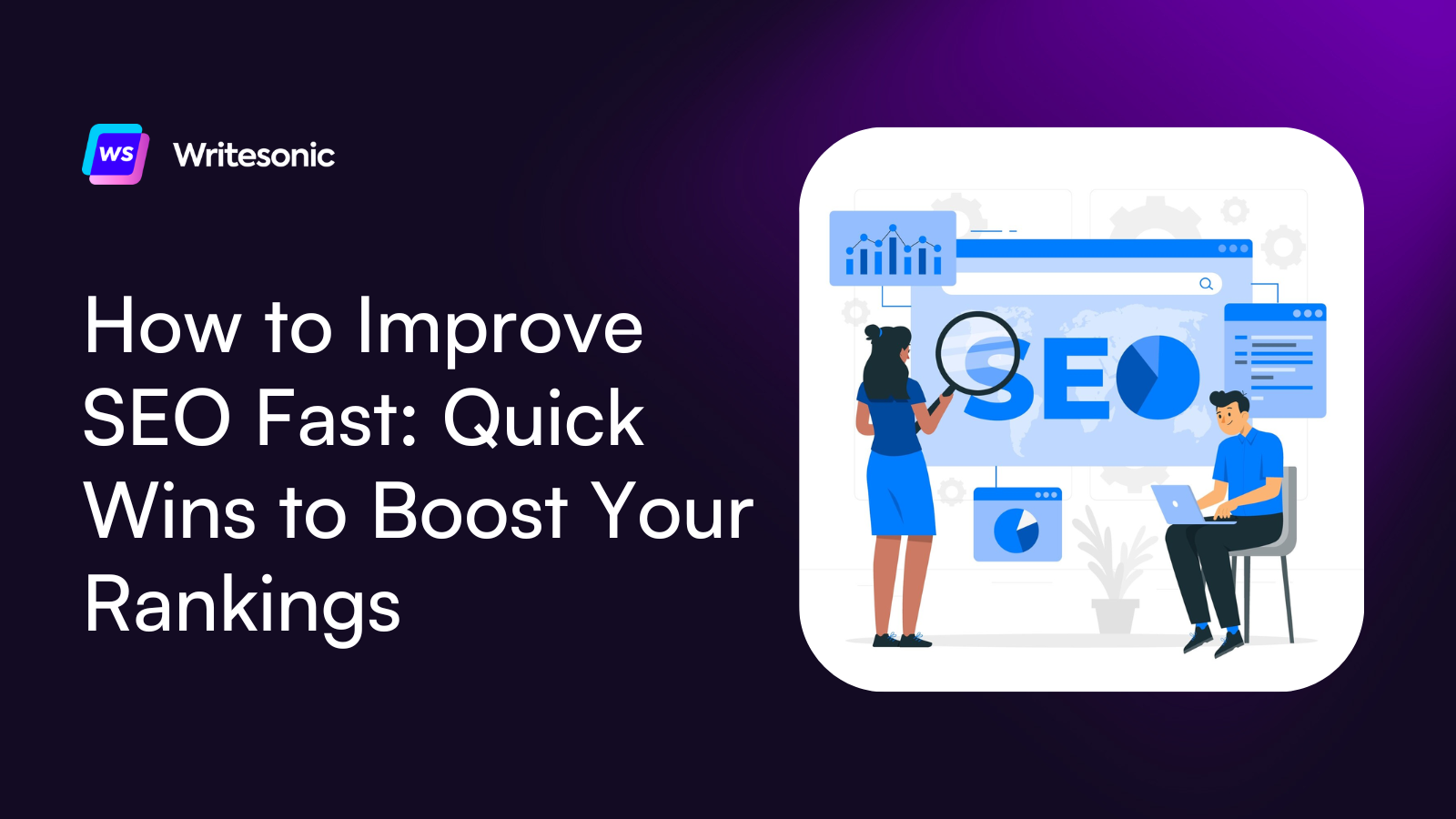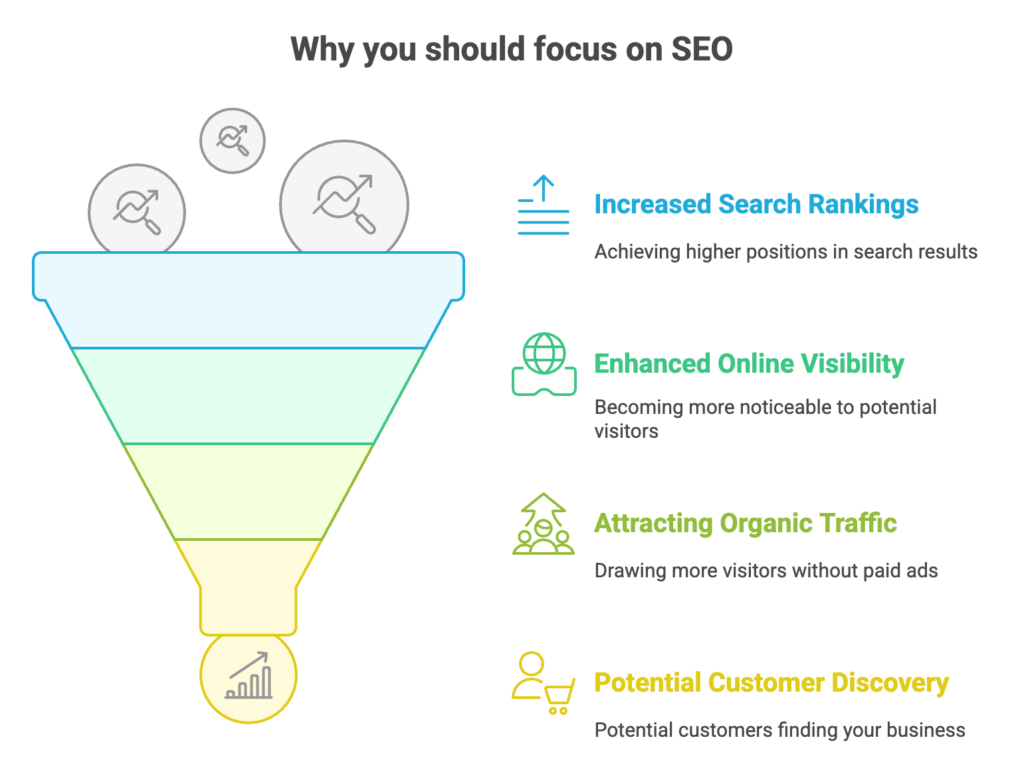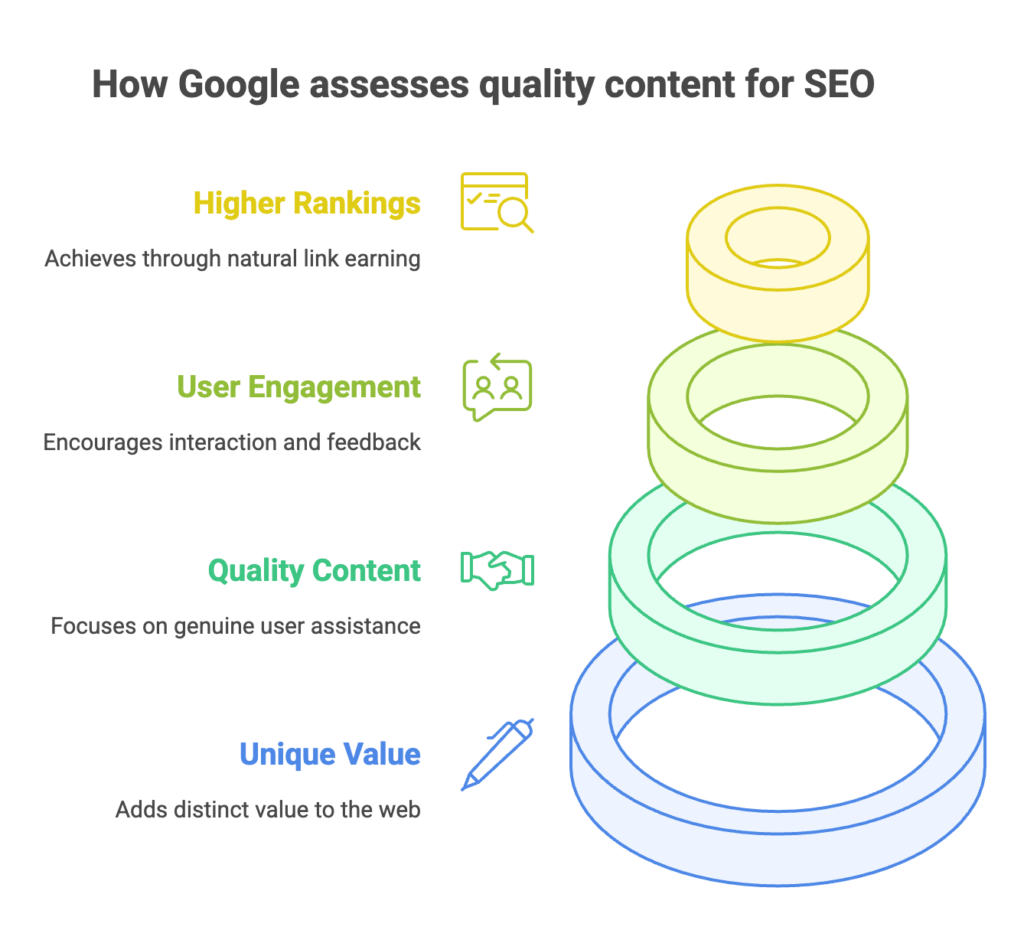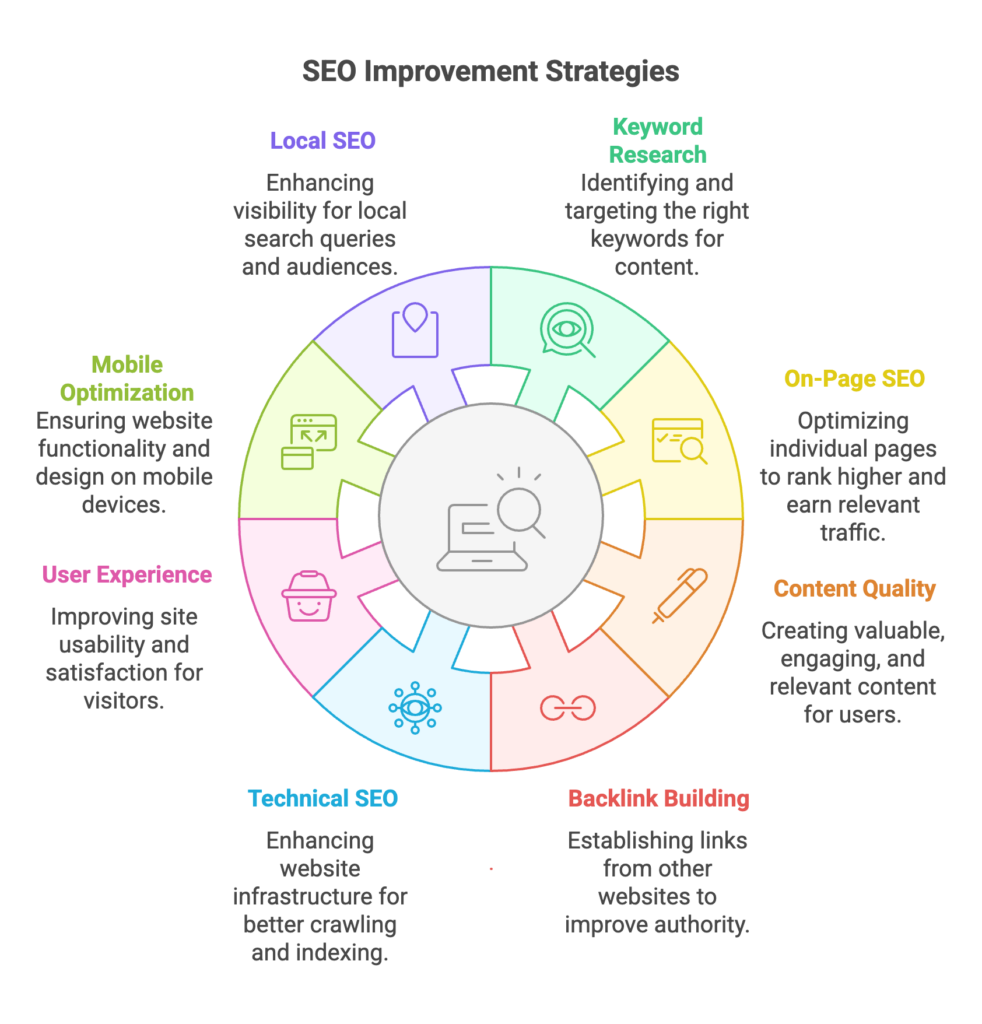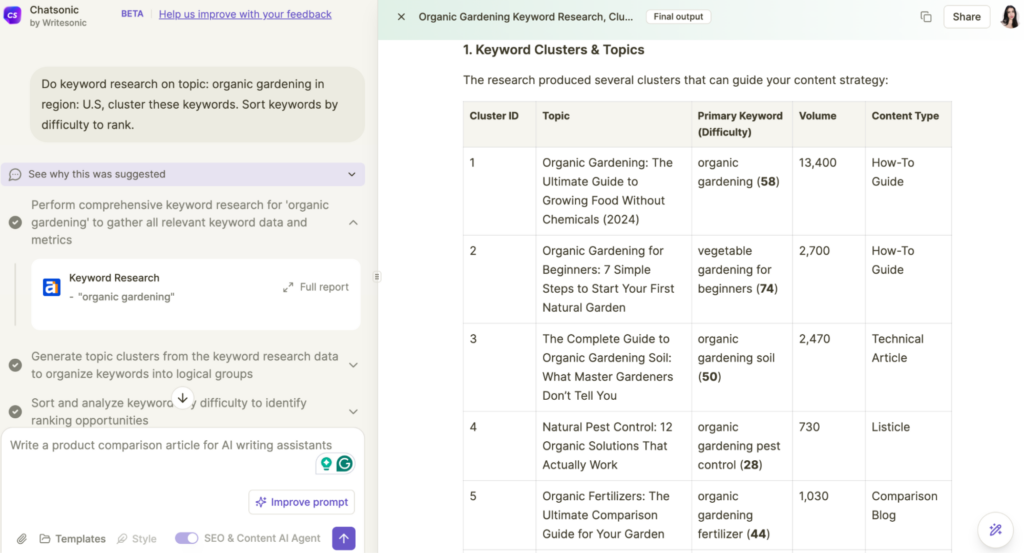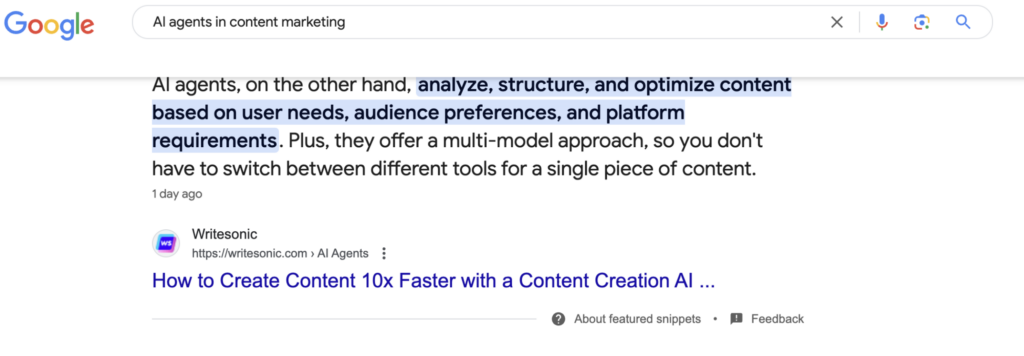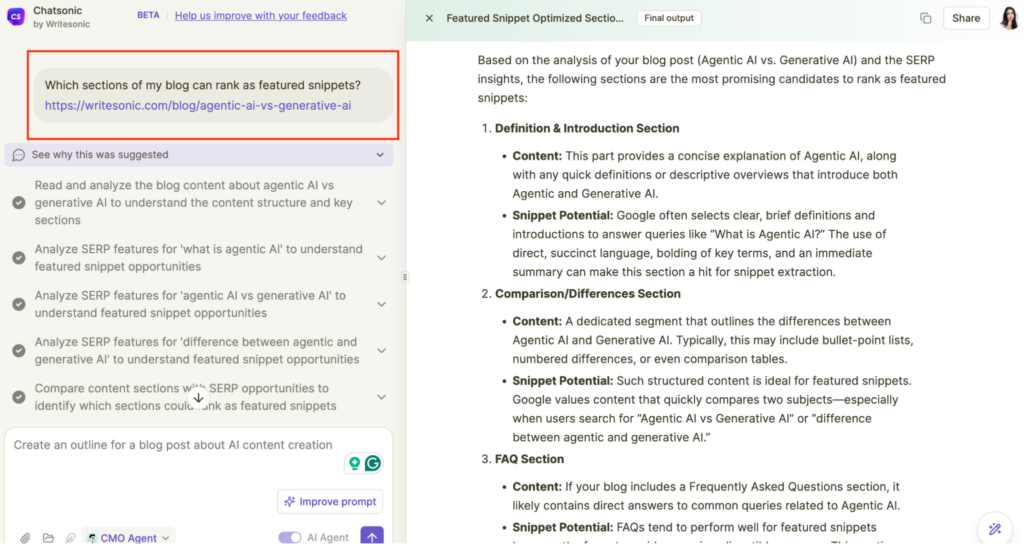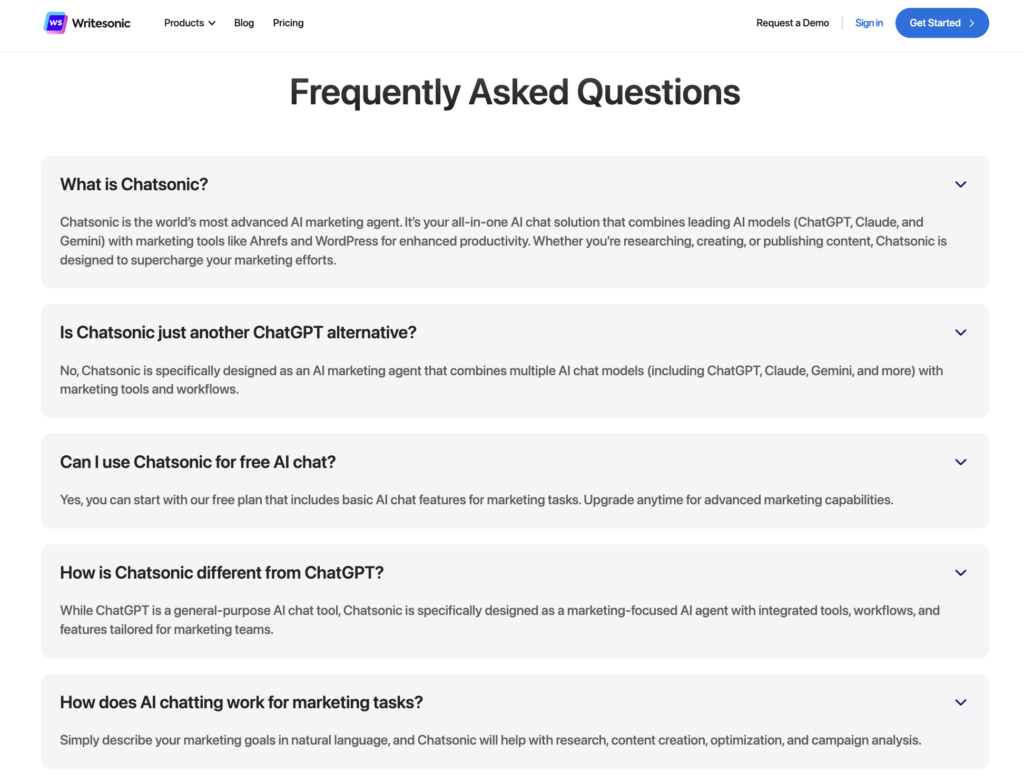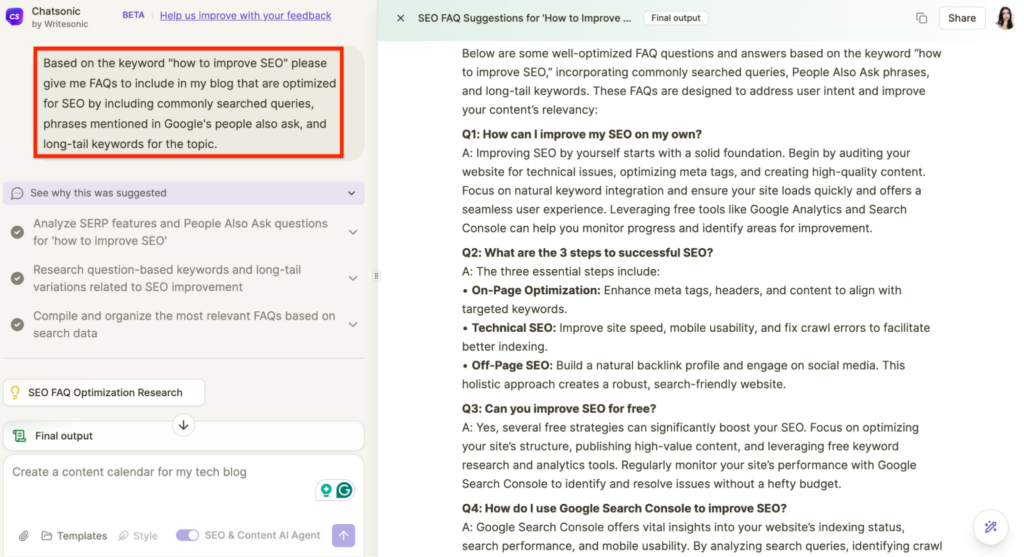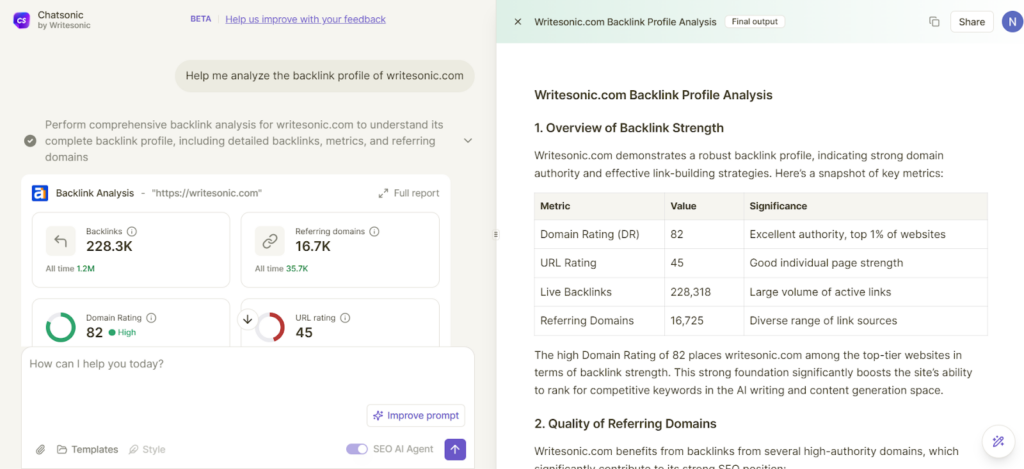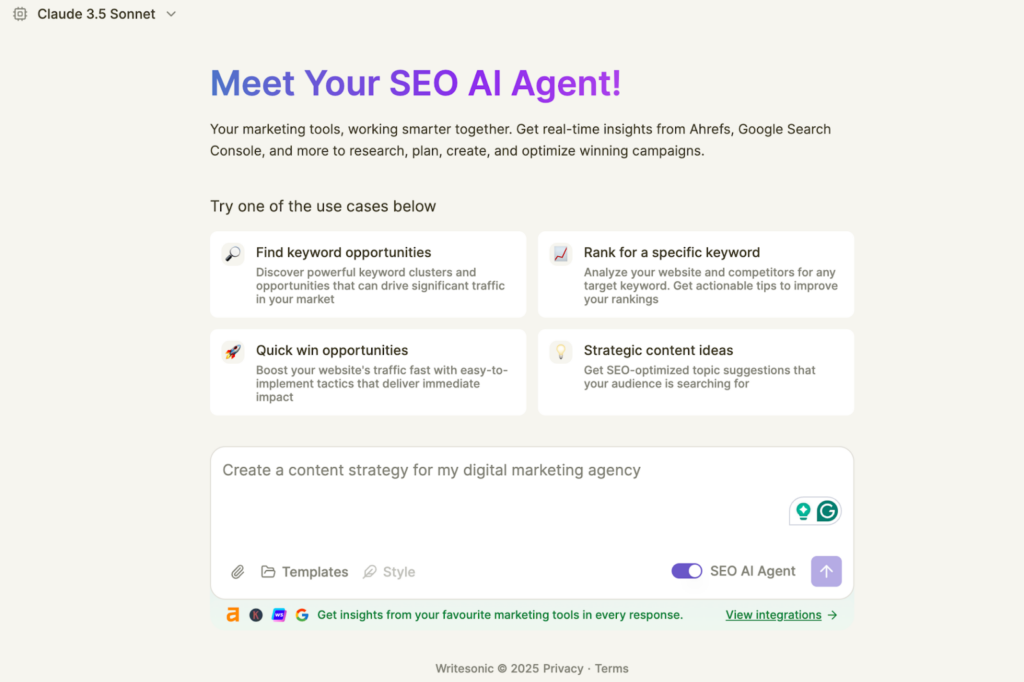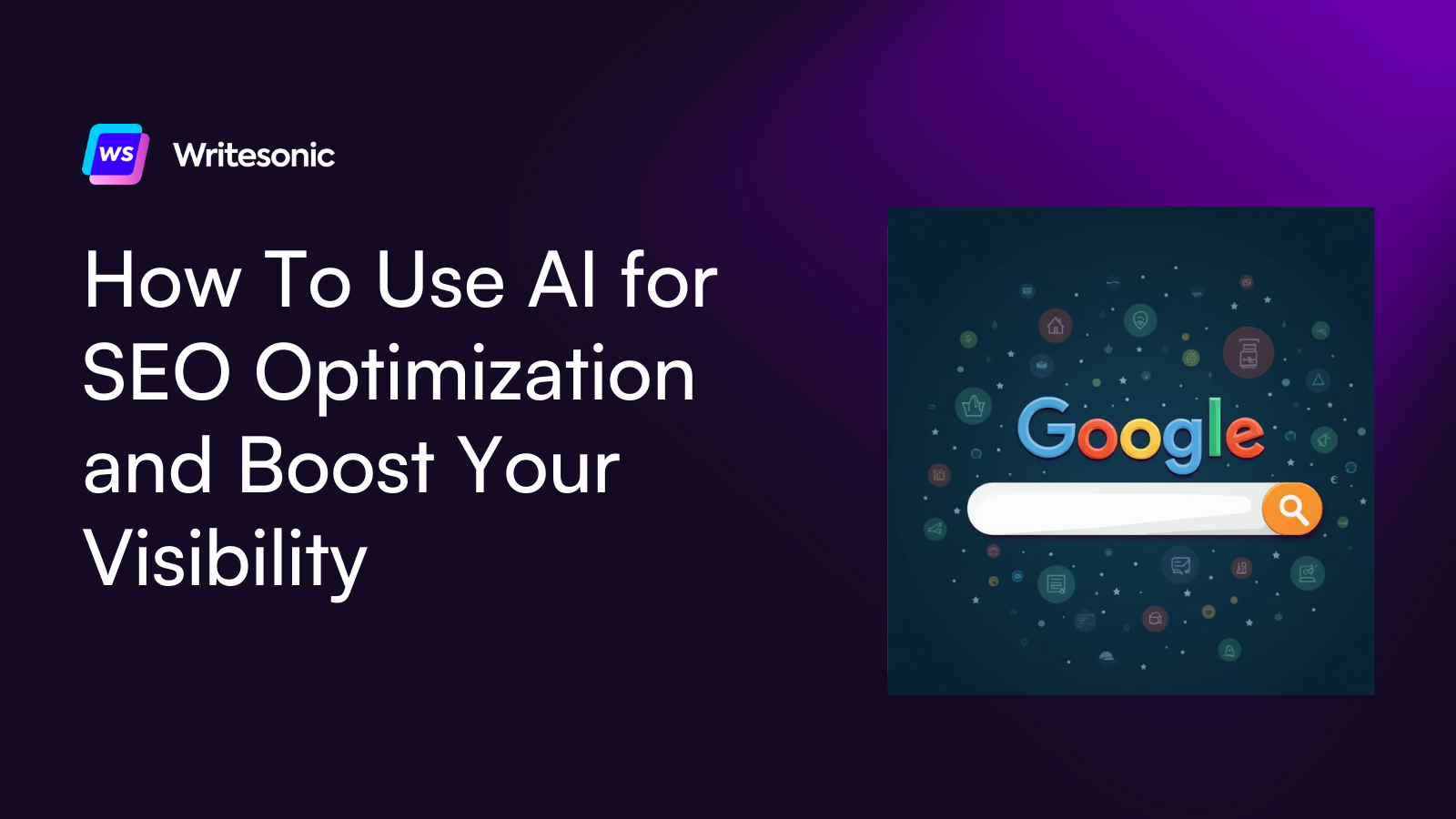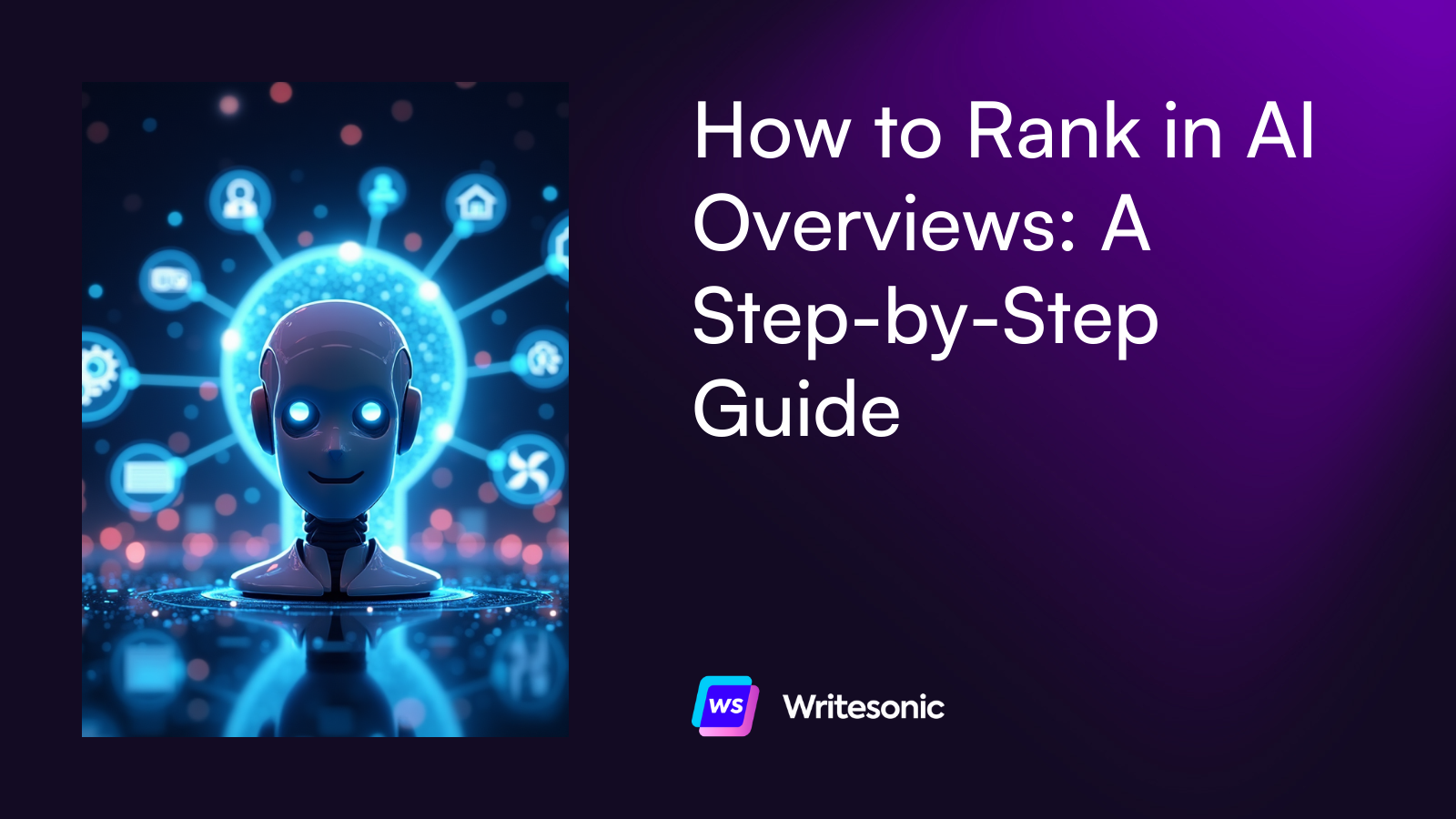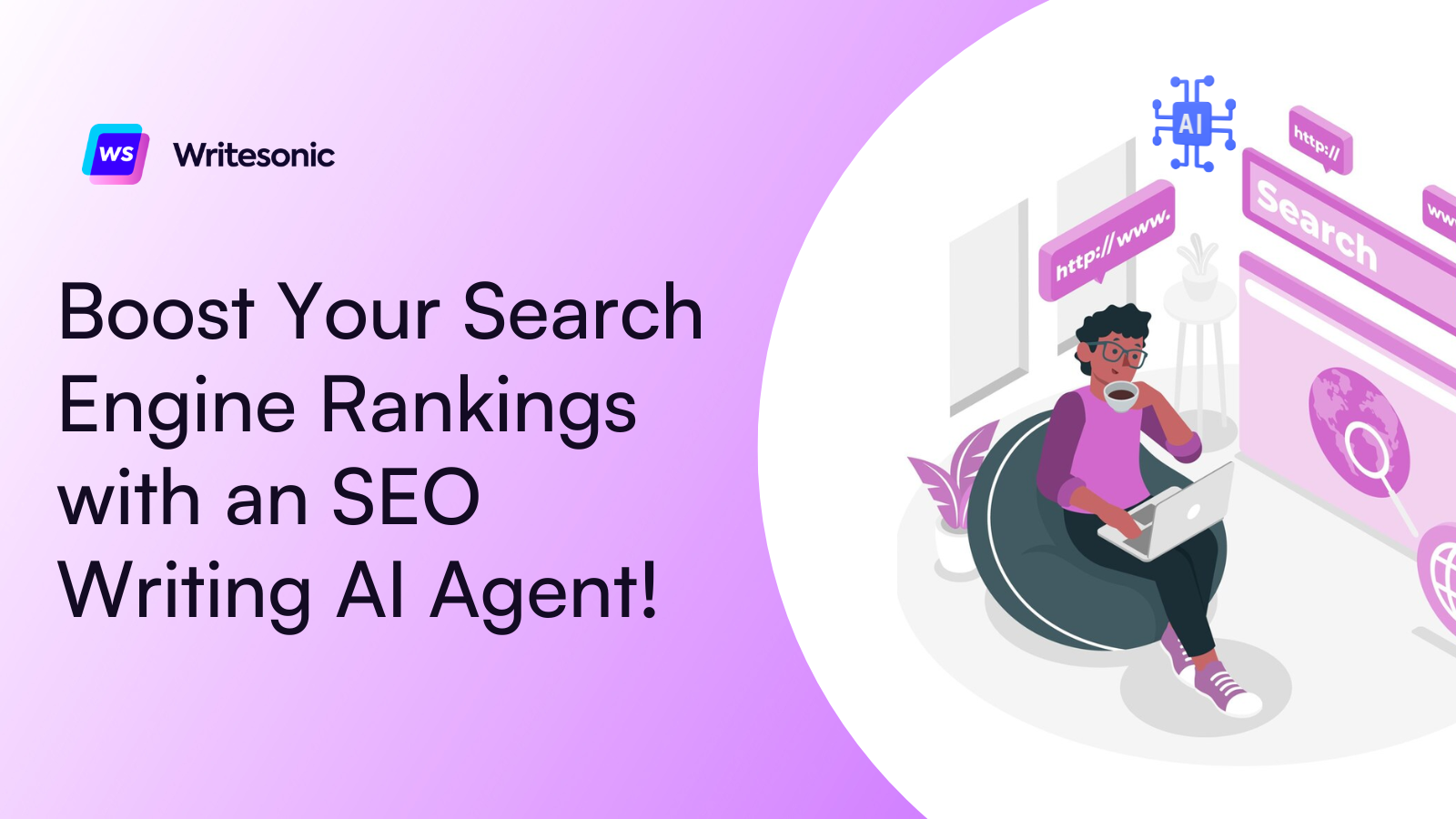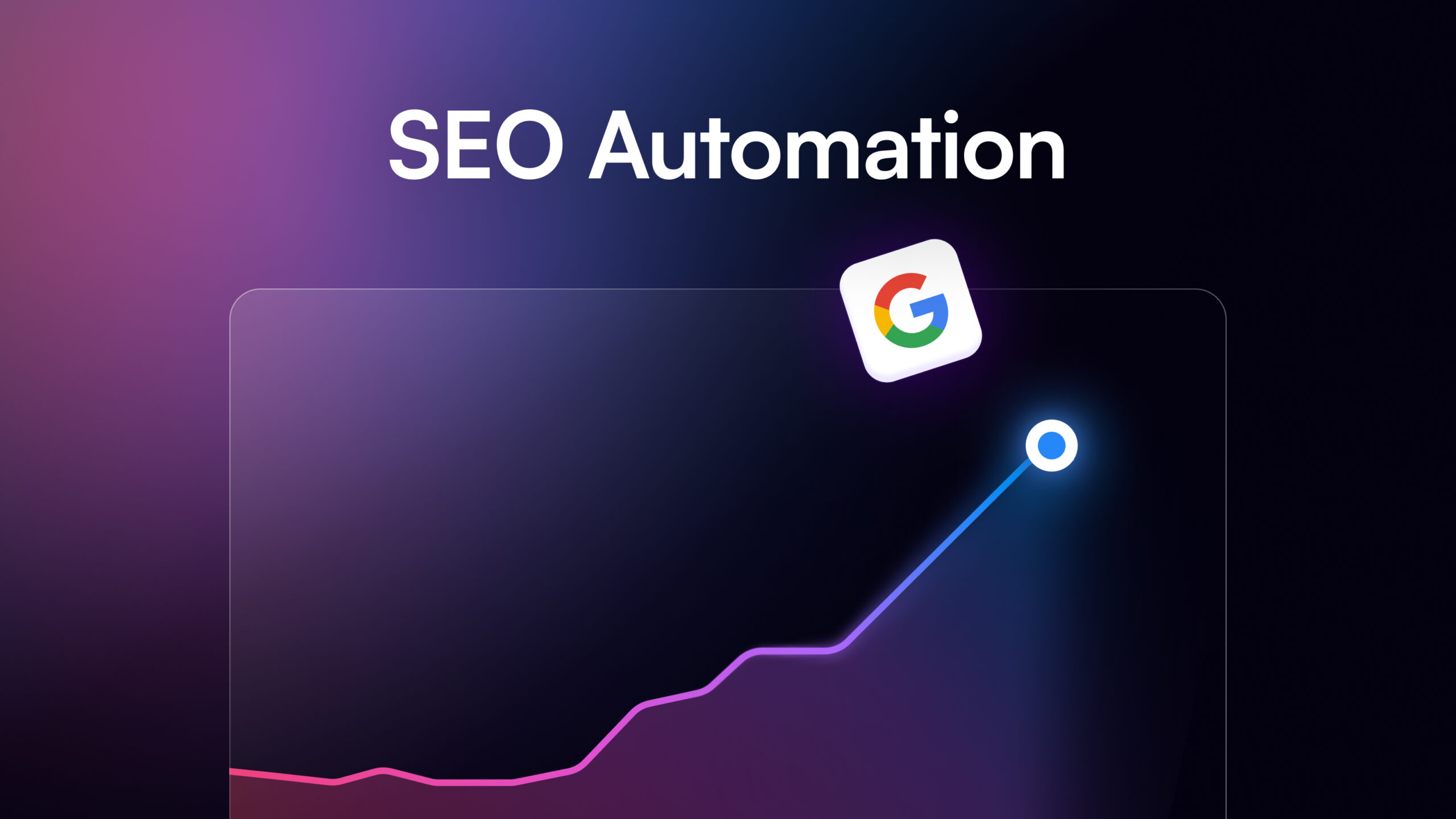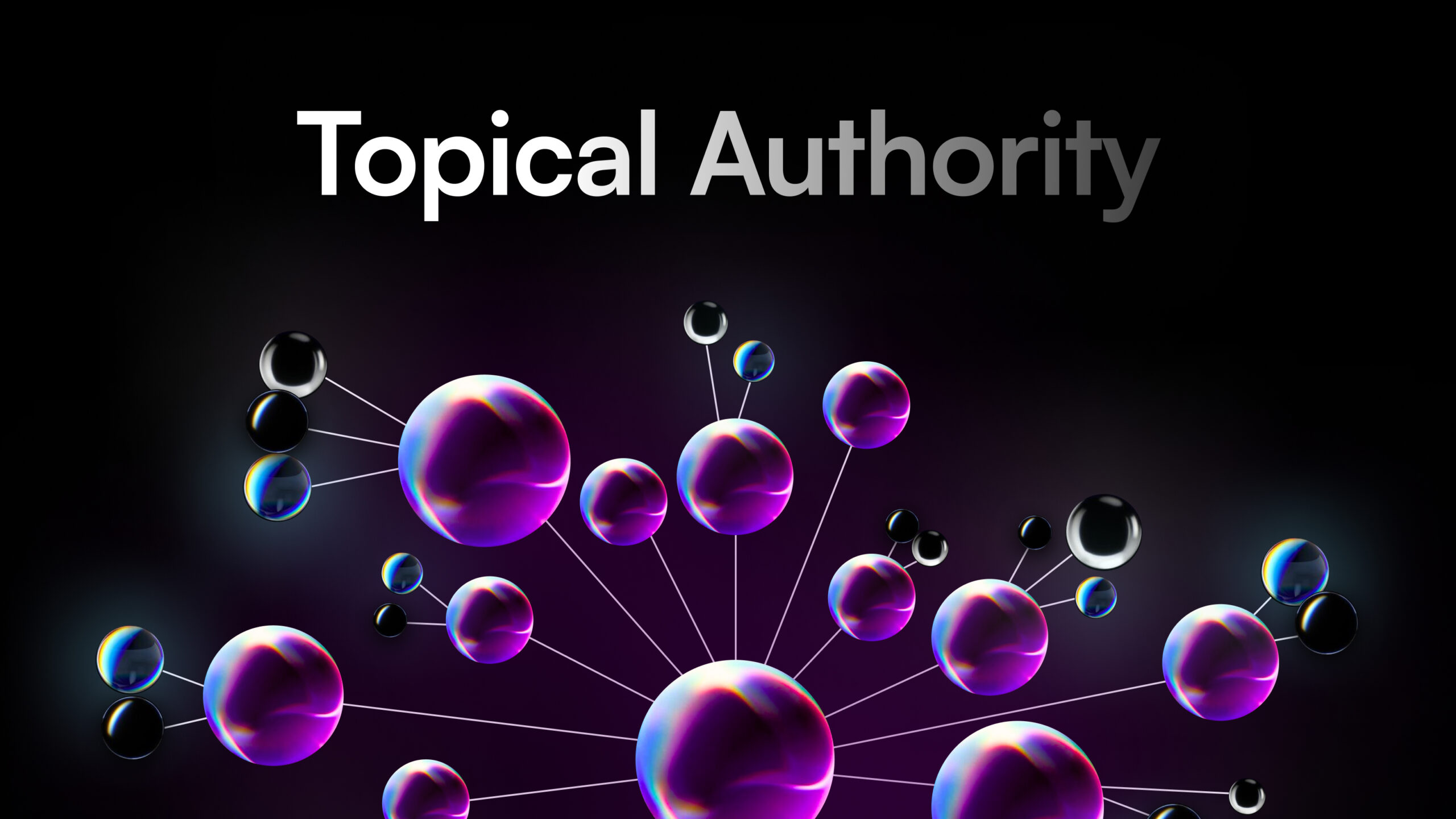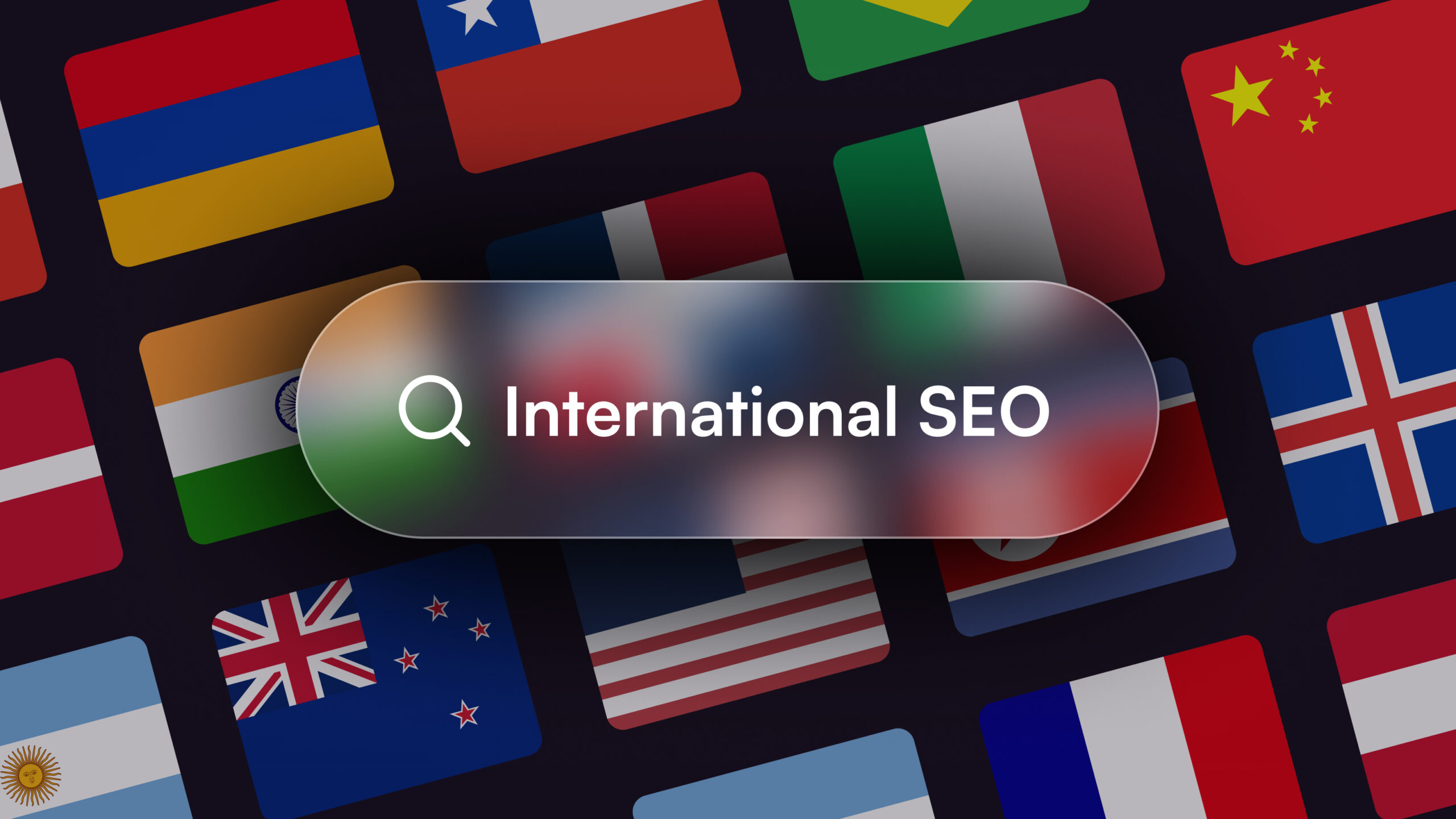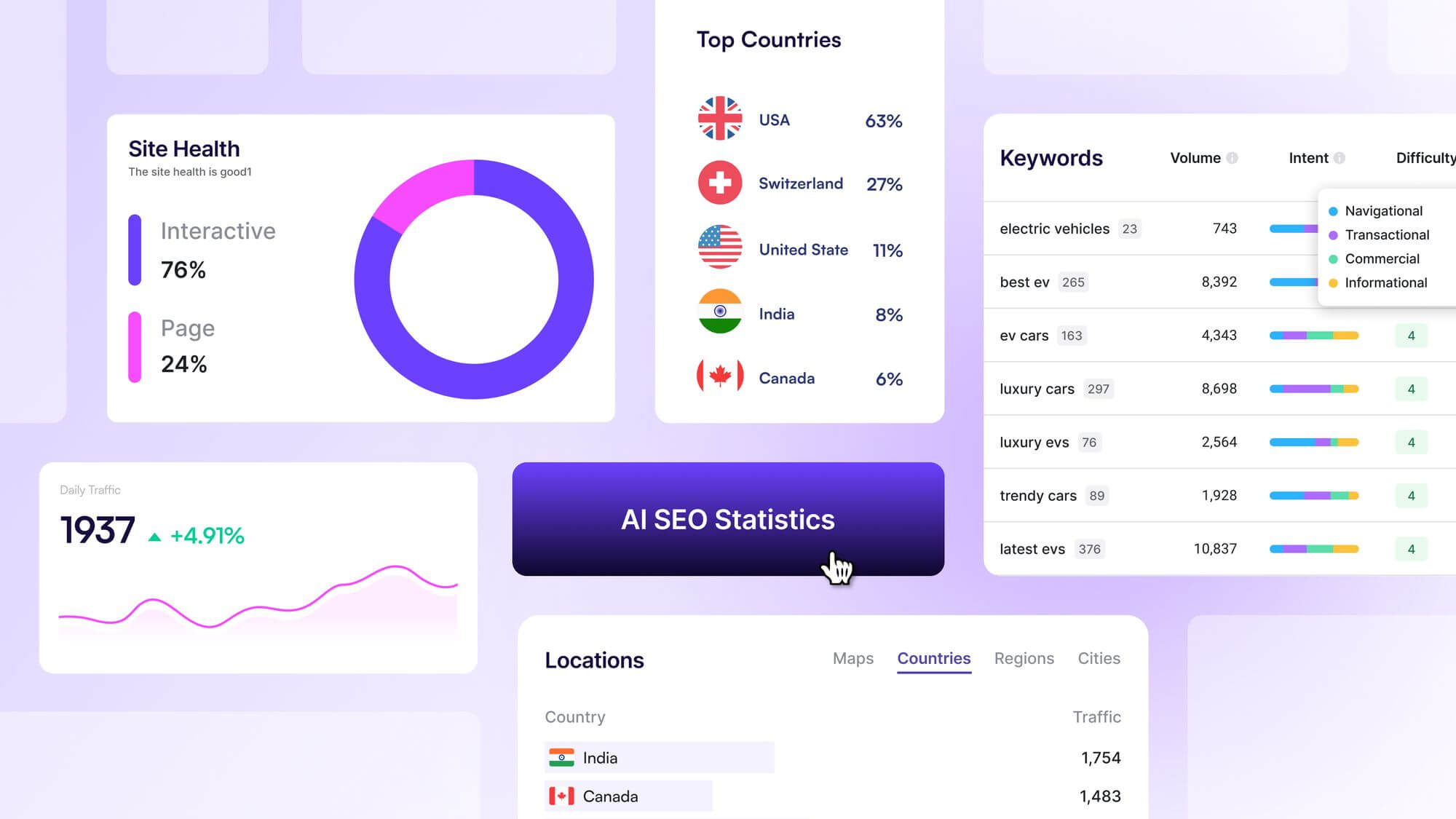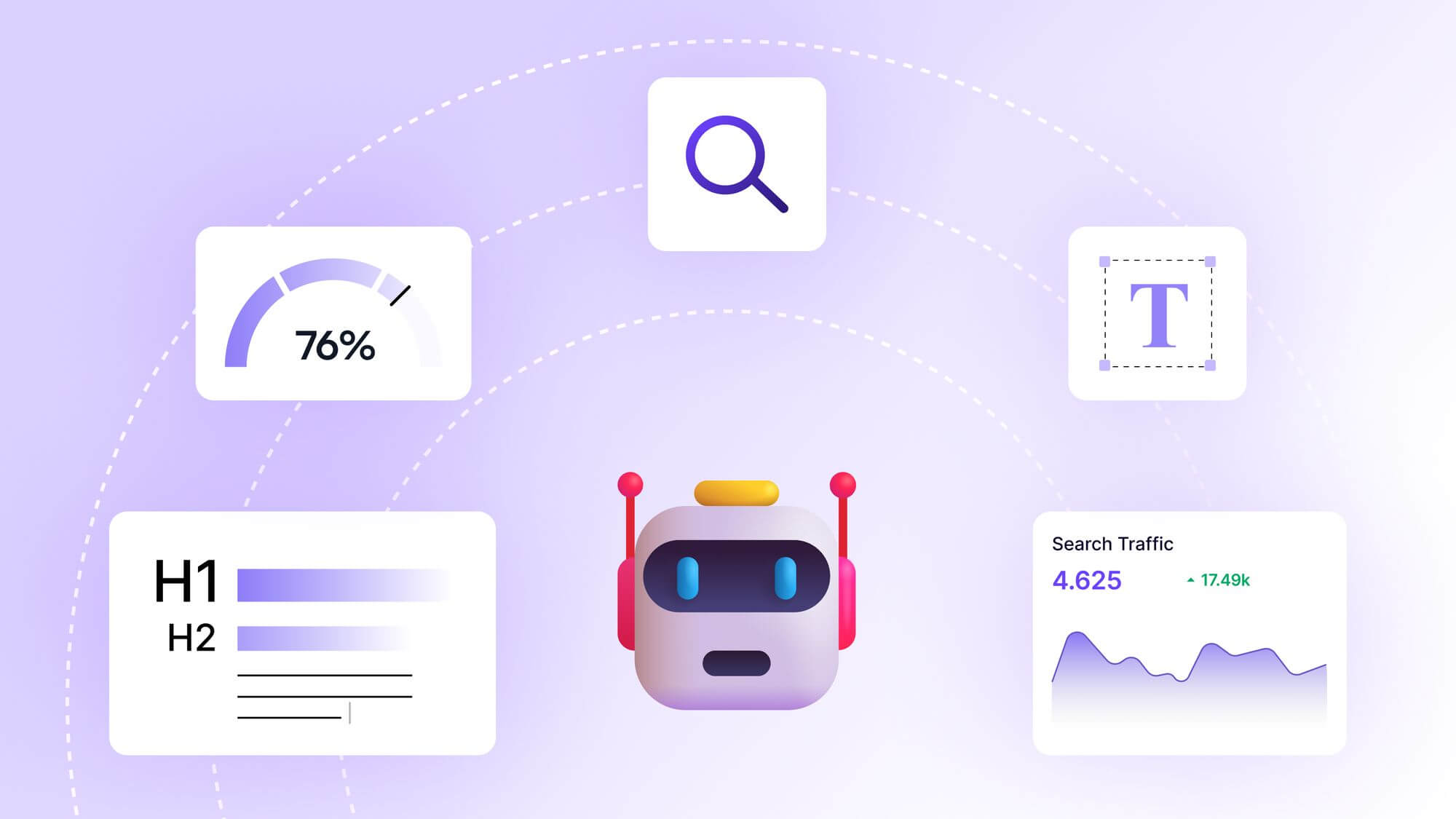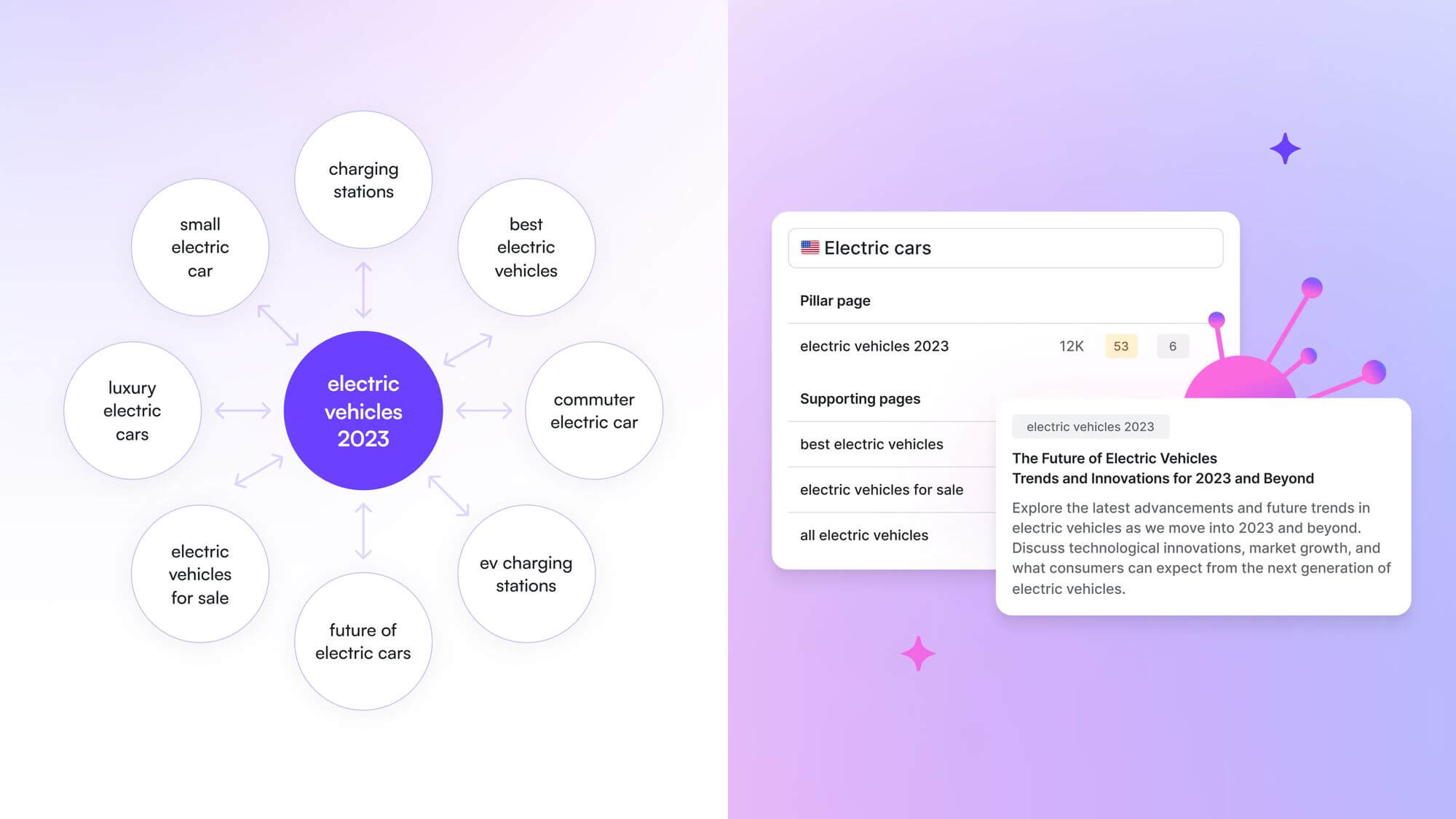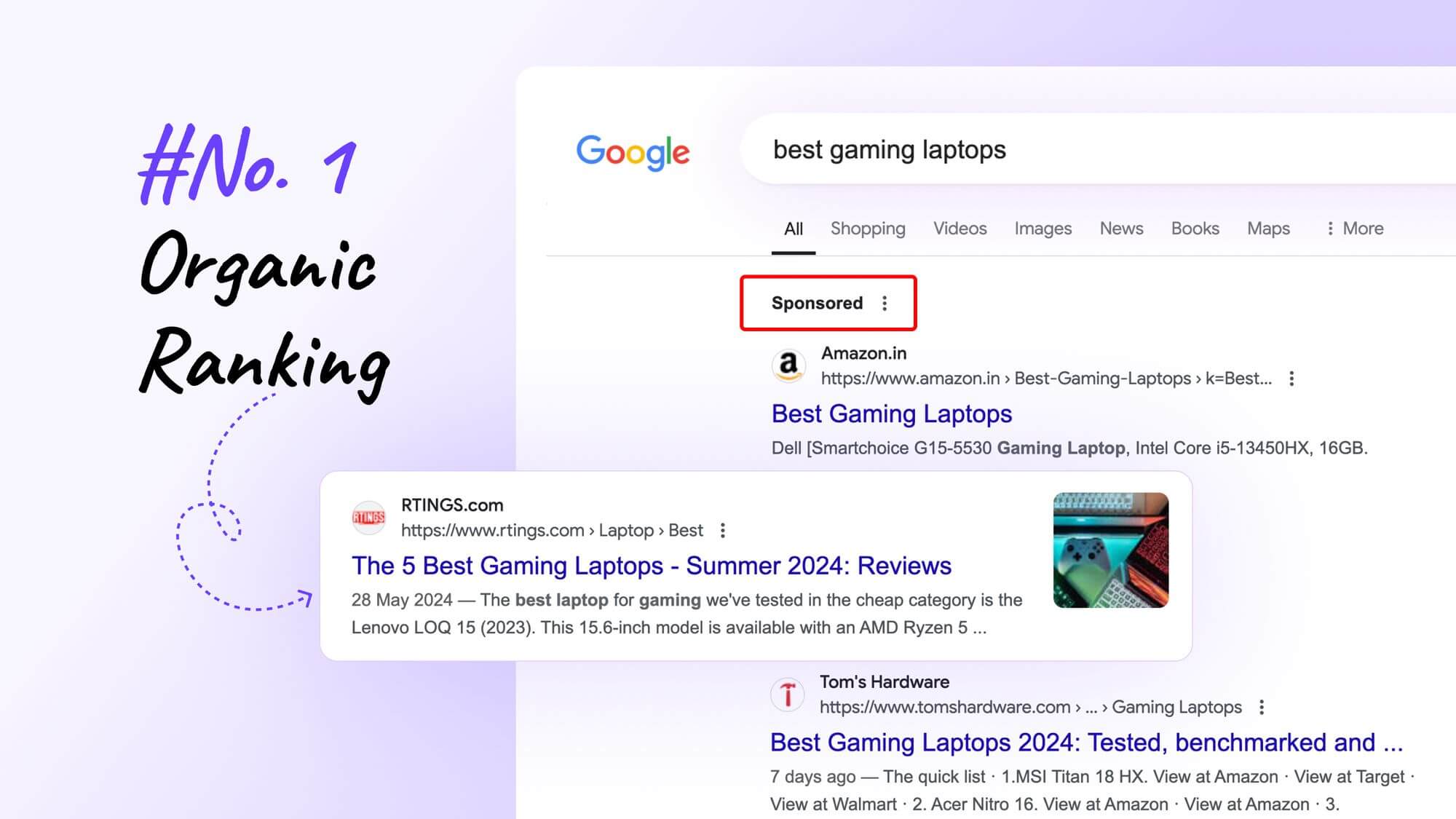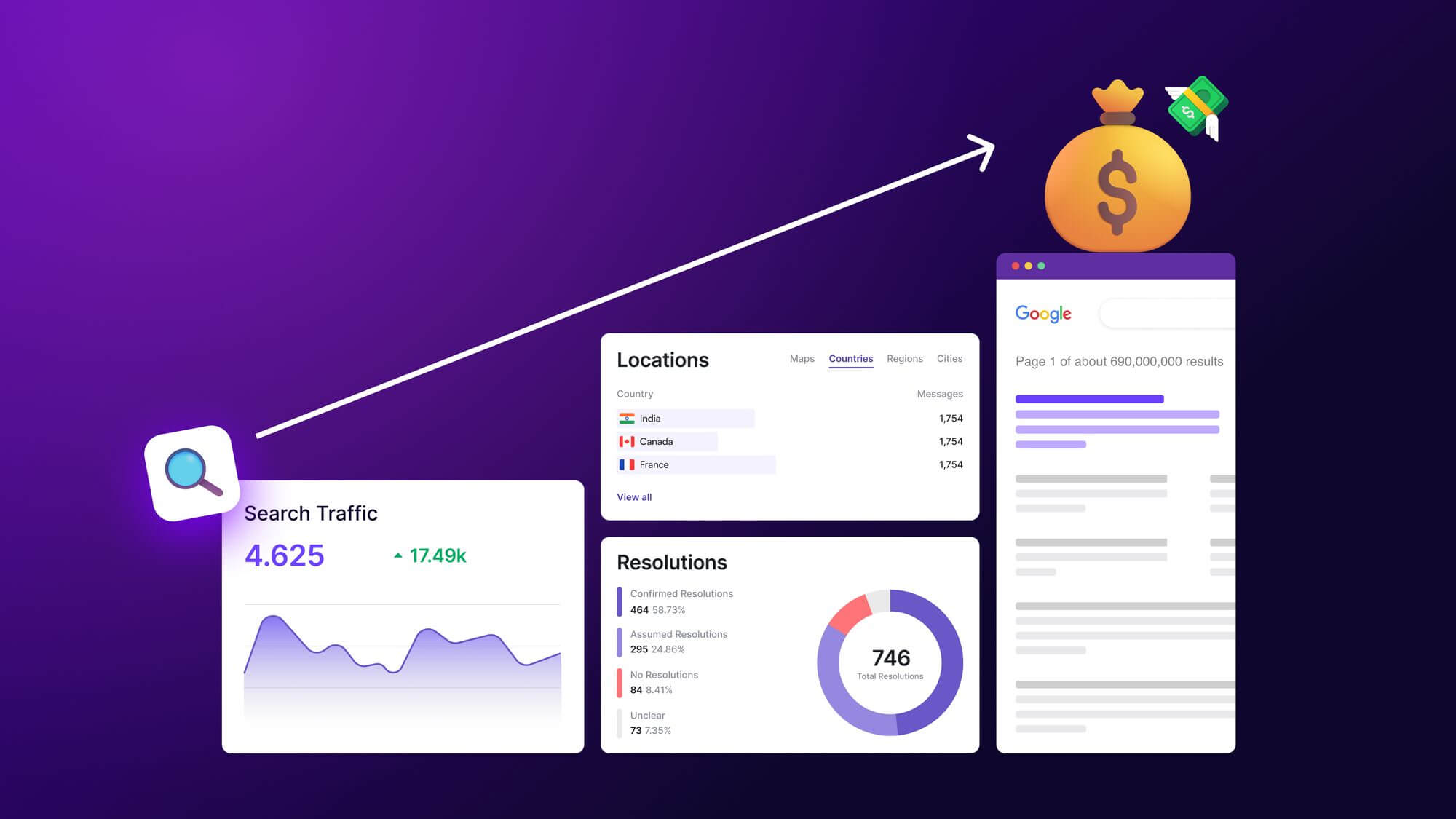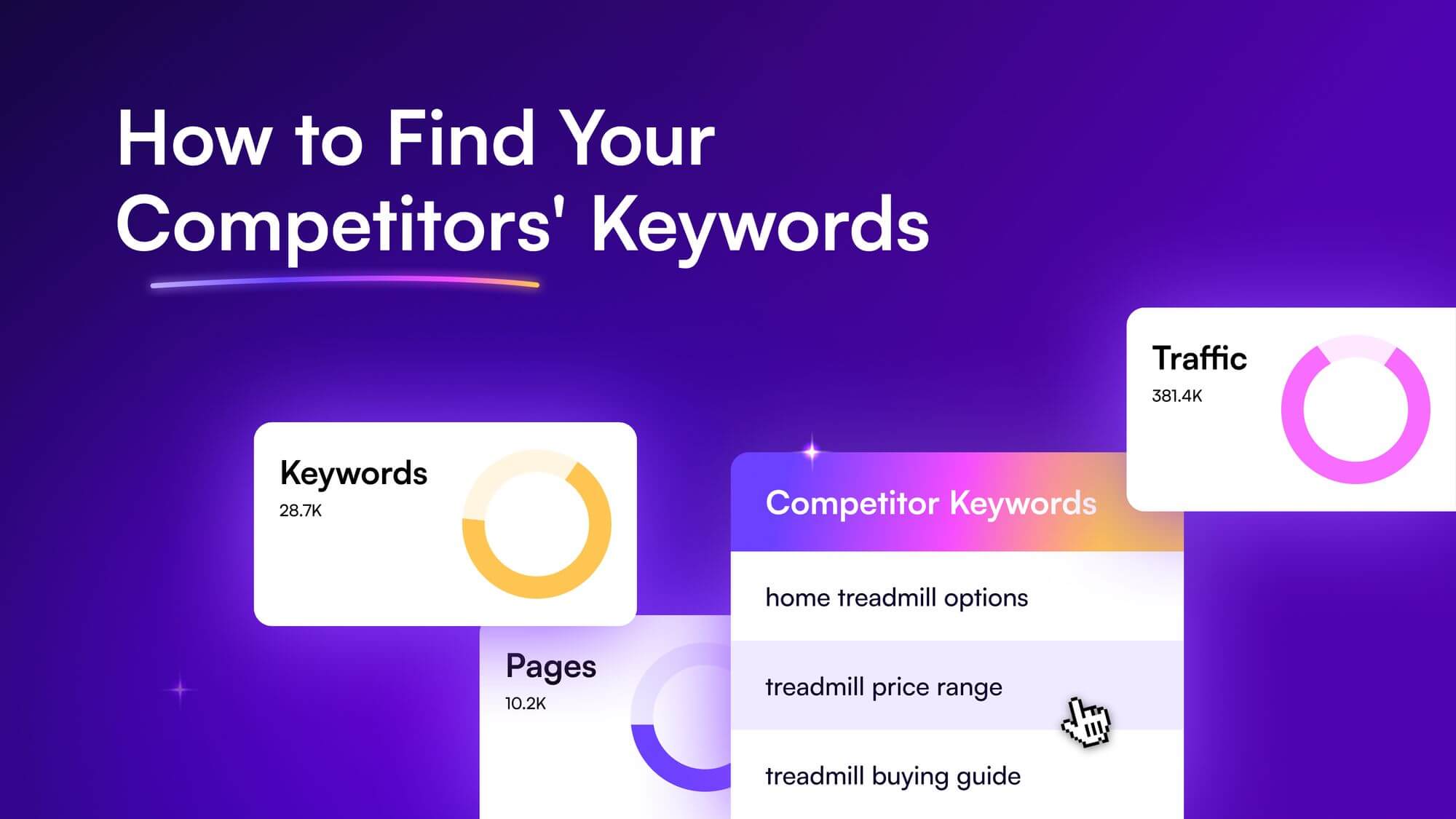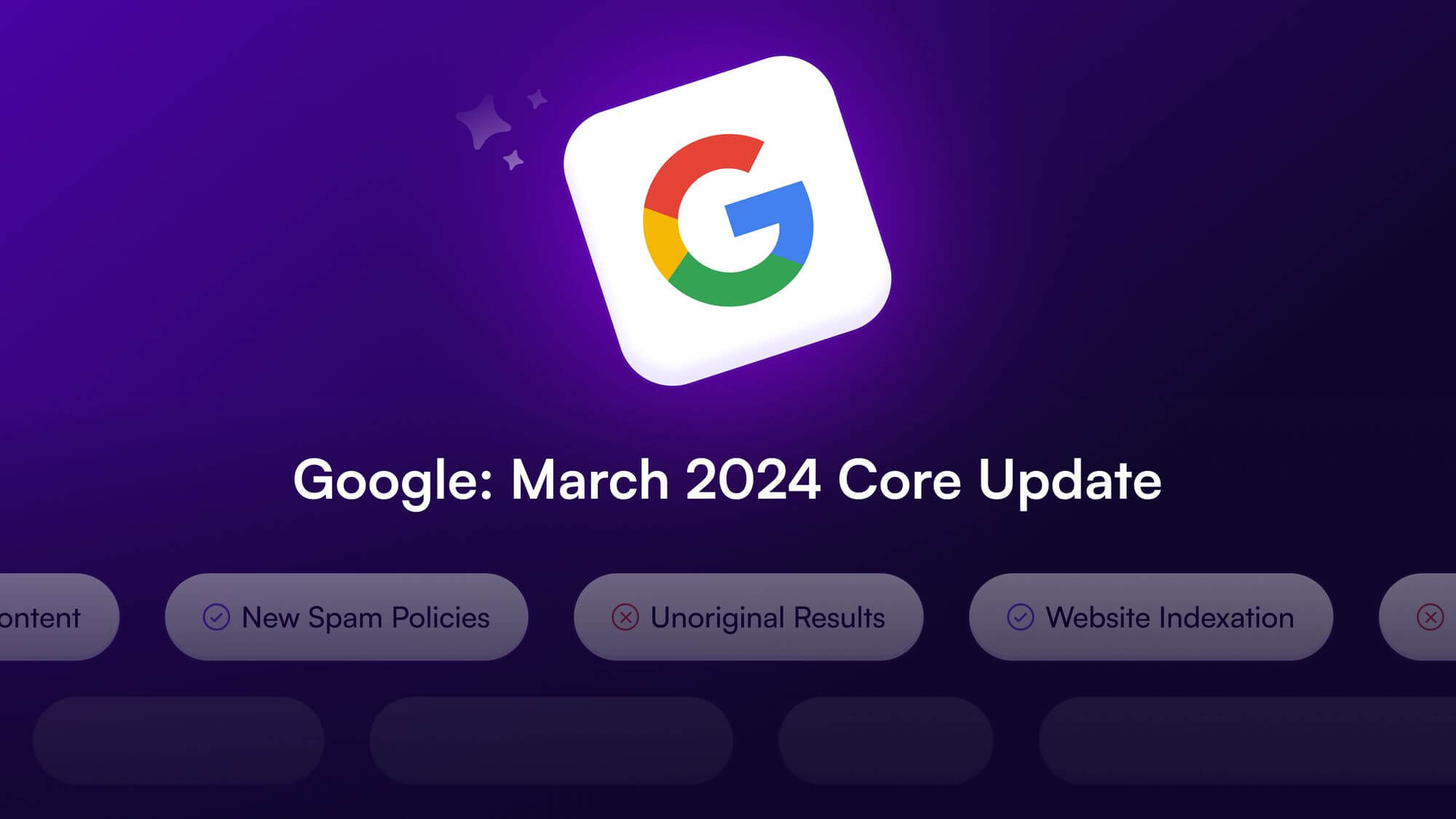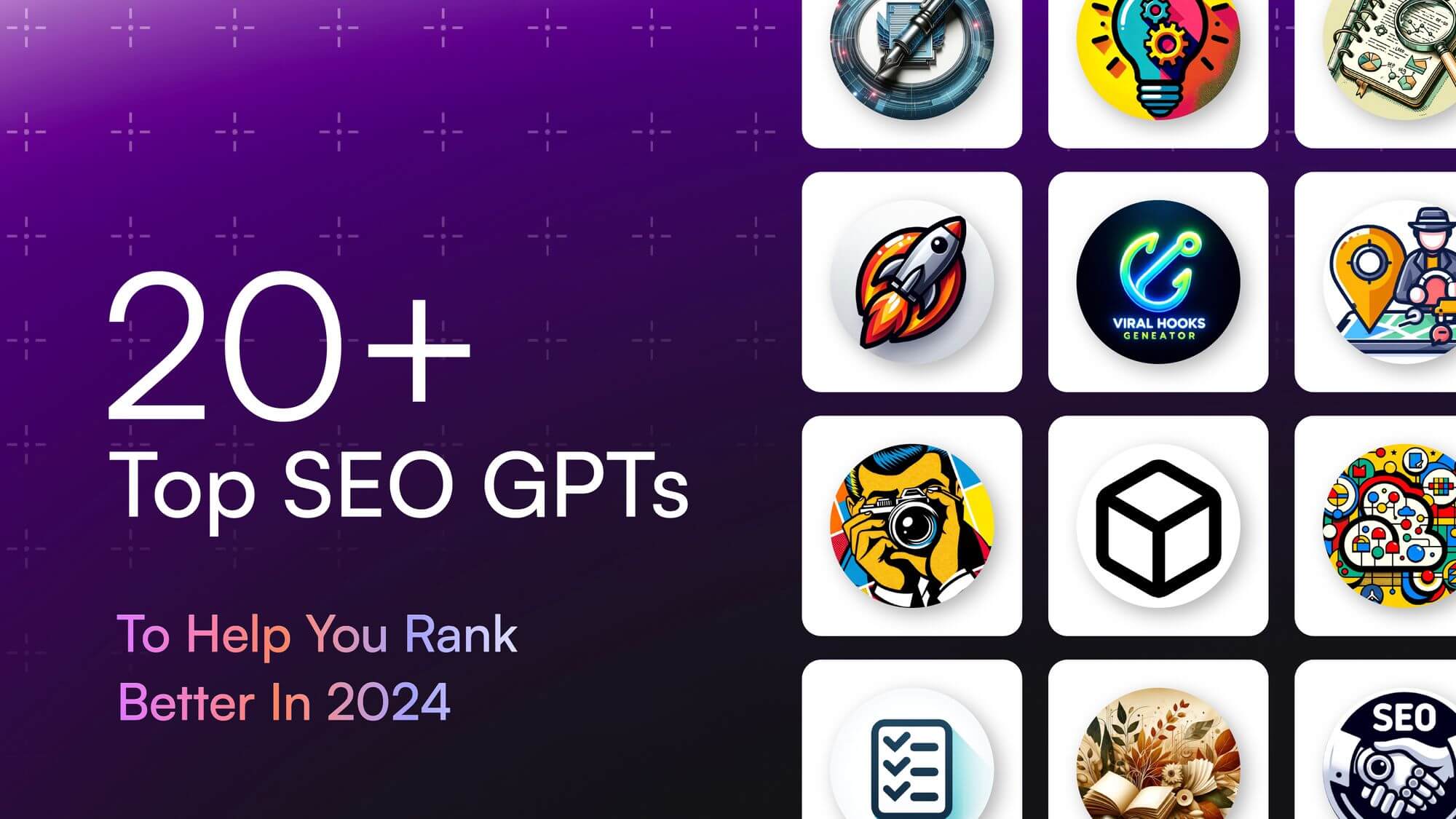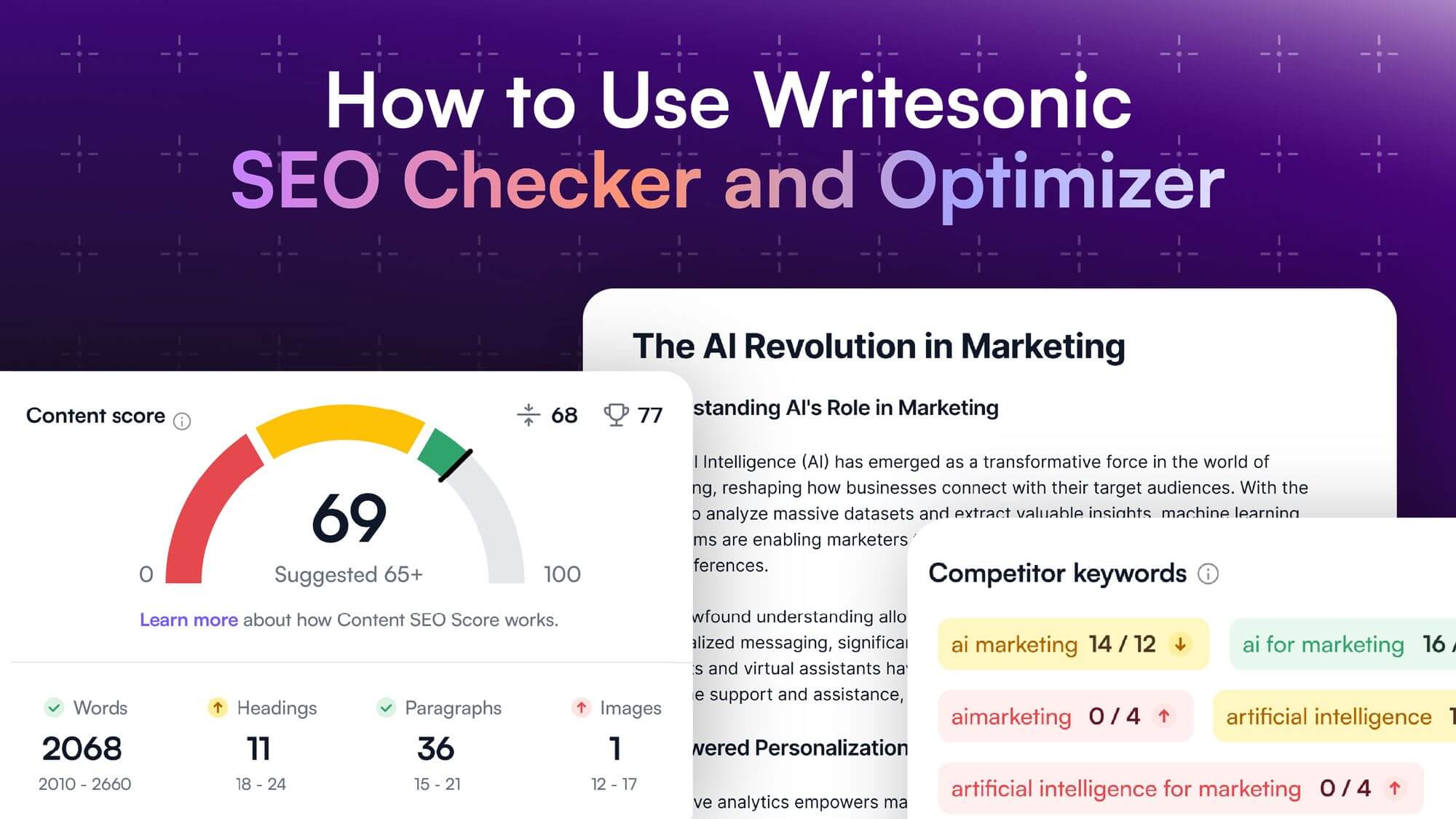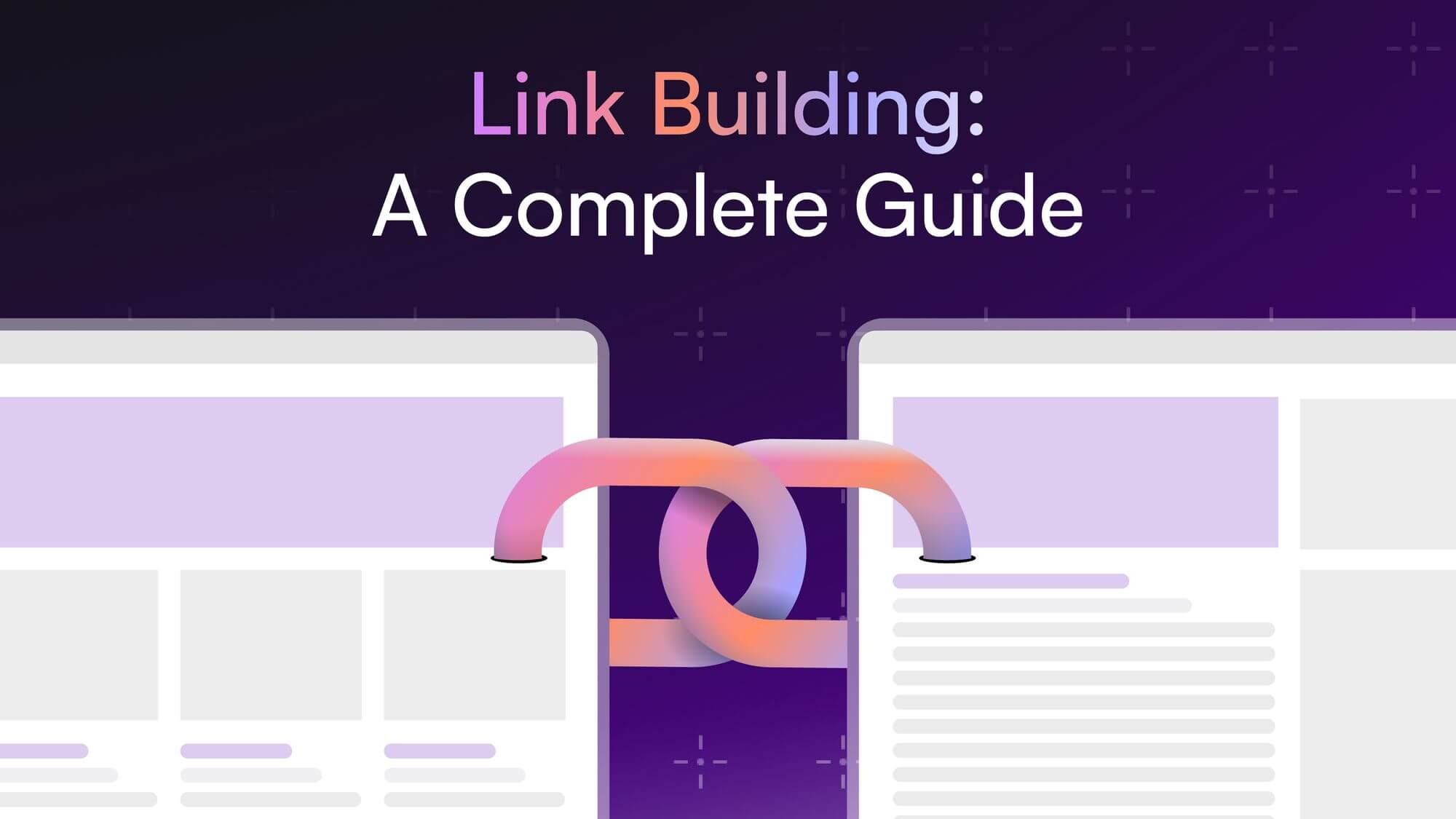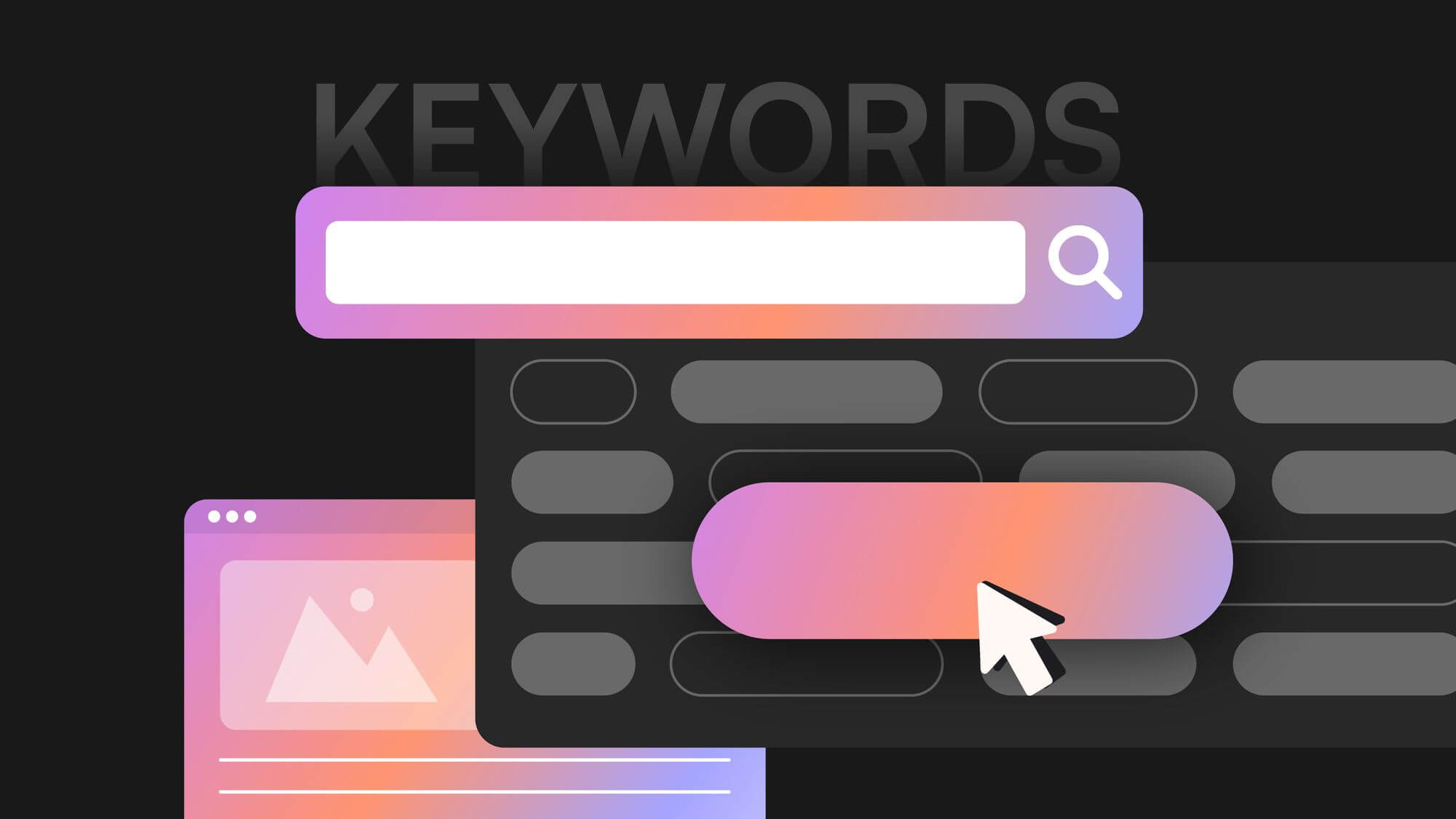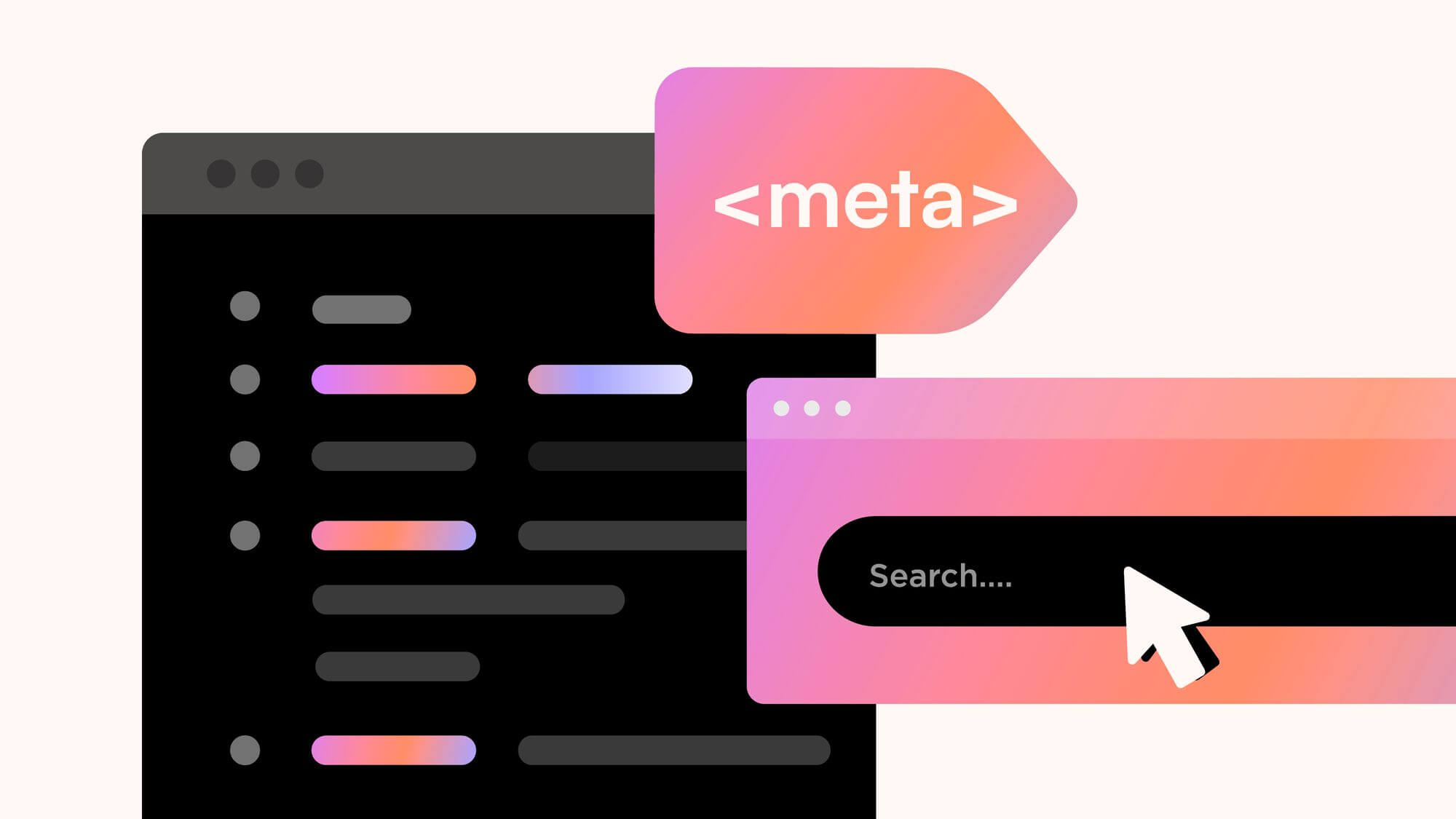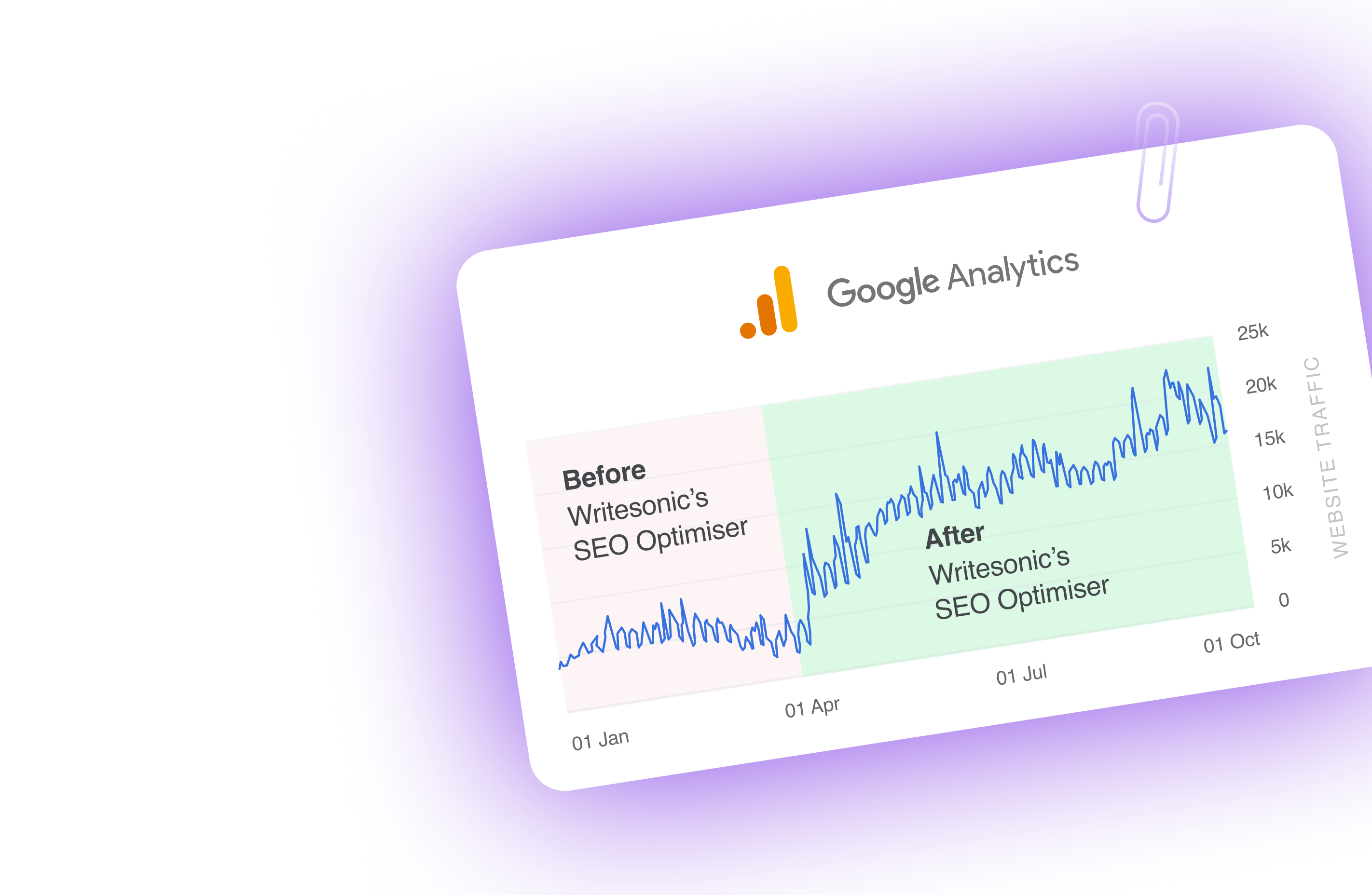Google’s search algorithm has evolved significantly. Tactics that worked a few years ago—like keyword stuffing or mass link-building—no longer produce results. Instead, Google rewards websites that prioritize user experience, content relevance, and technical SEO best practices.
And, no, you don’t need to shell out thousands for SEO experts.
I’ve tested what works and what doesn’t. Whether SEO feels like a foreign language or you’re looking to step up your game, this guide breaks down exactly what you need to do to climb those rankings.
So, if you want to improve your SEO rankings with practical steps that work, let’s take a closer look at the techniques that can help your website climb the search engine results pages.
In this blog, you’ll learn:
- The importance of SEO for your business’s visibility.
- How Google looks at content optimized for SEO.
- How to improve SEO using strategies like on-page optimization, link building, keyword research, and more.
- How artificial intelligence can automate your SEO workflow.
Why you need to focus on improving SEO
SEO (search engine optimization) is the process of optimizing your website so it ranks higher on search engines like Google. The higher your pages rank, the more organic (free) traffic you get.
Here’s why SEO should be a priority for any website owner:
- 93% of online experiences begin with a search engine.
- SEO drives 1,000%+ more traffic than organic social media.
- The first result on Google gets 27.6% of all clicks.
Ignoring SEO means missing out on traffic, leads, and revenue. Even if you have the best content or product, it won’t matter if no one can find it.
But what makes websites rank higher?
Google’s algorithm analyzes hundreds of factors to determine rankings, but here are the most important ones:
- Keyword optimization: Using the right keywords that match what people are searching for.
- Search intent: Your content must match what users expect when they search for something.
- Content quality: Google prioritizes valuable, well-researched, and engaging content.
- Backlinks: Links from reputable websites signal authority and trust.
- User experience (UX): Fast-loading, mobile-friendly sites rank better and improve bounce rate.
- On-page SEO: Optimizing titles, meta descriptions, headers, images, and content structure for better visibility.
- Technical SEO: Clean site structure, schema markup, and a strong internal linking strategy.
What is Google’s stance on SEO?
Google has always emphasized quality over tricks. In the past, websites could rank by keyword stuffing or using shady link-building tactics. Not anymore.
The Helpful Content Update reinforced this by devaluing sites that produce content just to rank rather than to help users genuinely.
So, if your page isn’t demonstrating expertise, solving a real problem, or adding unique value, it won’t sustain rankings.
Here’s what Google’s John Mueller says about SEO:
“There’s more to SEO success than just adding more pages. On the one hand, it’s important that the things you add actually bring new and unique value to the web. Your site should be unique, compelling, and of high quality, and it should also bring value to the web in ways that users recognize.”
This means that while prioritizing SEO, you should focus on quality, intent, and usability instead of just trying to “hack” the algorithm.
Google no longer views SEO as an isolated strategy. Instead, it evaluates how a website fits into the broader digital ecosystem. Pages that naturally earn links, encourage engagement, and provide comprehensive answers to user queries tend to rank higher.
💡 Learn more: Does Google Penalize AI Content?
How to improve SEO: 12 quick wins to boost visibility
Search engine optimization is far more complex today than just adding keywords to a page.
Google’s algorithm evaluates hundreds of factors, but the most crucial ones revolve around content relevance, search intent, and user experience.
To rank higher, websites must follow a structured approach that prioritizes strategic keyword use, high-quality content, and technical optimization. Let’s take a look at the top 12 actionable strategies you can implement to improve your SEO performance:
1. Keyword optimization
Keyword optimization goes way beyond stuffing pages with high-volume search terms.
In the past, Google ranked pages based on exact-match keyword usage, but that’s no longer the case.
With the introduction of RankBrain and BERT, Google now prioritizes semantic relevance and search intent over repetitive keyword placement. This means that Google understands variations of a keyword and does not require exact matches.
For example, a page optimized for “best wireless headphones” can still rank for “top Bluetooth headphones” if the content is relevant.
These are called LSI (Latent Semantic Indexing) keywords or related terms.
Apart from this, here are a few other aspects to focus on for effective keyword research for SEO:
- Pick long-tail keywords that show clear search intent.
- Choose phrases with moderate monthly searches (1,000-10,000).
- Think about keyword difficulty scores below 40.
- Find questions your audience asks.
- Track competitor keyword rankings.
How to optimize for keywords properly:
A strong keyword strategy focuses on three core elements: finding the right terms, using them effectively, and adapting to changes in search trends.
Instead of targeting broad, high-competition keywords, focus on specific queries that indicate clear intent.
For example, a generic keyword like “best laptops” is difficult to rank for and does not indicate user intent.
Instead, a longer, intent-driven keyword like “best budget laptops for students 2025” provides more ranking opportunities and matches a user’s specific needs.
Keyword research tools like Ahrefs and Semrush help identify terms with the right balance of search volume, competition, and intent.
But if you want to speed up your keyword research process, AI agents like Chatsonic are a great way to save time.
Instead of relying on tools like Ahrefs or Google Trends, you can just ask Chatsonic to give you a list of relevant keywords for the topic you want to target. You’ll get an automated detailed report of which terms to target, their search intent, potential topic clusters, and actionable strategies to rank for them.
For example, if you want to write about “organic gardening,” just ask the AI SEO agent to present you with relevant keyword clusters to target and relevant keywords:
As you can see, Chatsonic automatically does all the keyword research for you without any manual effort. Now you have a detailed report of keywords and topic clusters to target for your next article.
Once you have these data-driven keyword insights, place keywords in strategic locations like metatags, throughout headings, within the first 100 words of your content, and image alt texts.
💡 Also read: How Many SEO Keywords Per Page Should You Use?
2. Matching content to search intent
Even if a page is perfectly optimized for keywords, it won’t rank if it doesn’t match search intent.
Search intent refers to the reason behind a search query. A user searching for “how to optimize a website for SEO” is looking for a guide or step-by-step instructions—not a product page selling an SEO tool.
Search Engine Results Page (SERP) analysis is a great way to get insights into user intent. The SERP features like People Also Ask boxes, knowledge panels, or image packs show the dominant search intent.
Google’s goal is to deliver the most relevant content for every search, meaning a page must provide exactly what users expect to see when they query.
Types of search intent and how to optimize for each:
- Informational intent:
- These searches are looking for answers rather than making a purchase.
- Example queries: “How does Google rank websites?” “What is technical SEO?”
- Best content format: In-depth blog posts, guides, and FAQ pages.
- Optimization strategy:
- Provide direct, well-structured answers.
- Use clear subheadings to break down complex topics.
- Include diagrams, charts, and real-world examples to add value.
- Commercial intent:
- Users are researching before making a decision.
- Example queries: “Ahrefs vs. Semrush comparison” or “Best email marketing software”
- Best content format: Comparison posts, expert reviews, and product roundups.
- Transactional intent:
- Users are ready to take action (buy, sign up, book).
- Example queries: “Buy iPhone 15 online” “Best deals on MacBook Pro”
- Best content format: E-commerce product pages, landing pages.
Understanding search intent ensures that content is not just optimized for keywords but also aligns with what Google expects to rank.
3. Optimizing for featured snippets
A featured snippet is the highlighted answer box that appears above organic search results.
Landing in position zero–also known as a featured snippet–can dramatically increase visibility and click-through rates, but securing this spot requires a structured approach.
Here’s how a featured snippet would appear in Google search results:
As you can see, optimizing your content for Google’s featured snippet is a huge advantage as it guarantees top most visibility for anyone who searches for a particular query.
To rank for featured snippets, make sure your content provides a direct, concise answer.
Google favors clear, to-the-point explanations for snippet selection. Answers should be 40-50 words long and appear just after any headings or titles for easy navigation and crawlability.
You should also ensure your content follows structured formatting. Here’s how you can optimize for featured snippets:
- Write short paragraphs that answer questions directly.
- Use clear H2 and H3 subheadings to organize your content better.
- Create well-laid-out lists and tables that are easy to read.
- Add high-quality images to boost visibility.
- Focus on long-tail keywords that often trigger featured snippets.
Many featured snippets come from Google’s People Also Ask (PAA) box. Identifying and answering these related questions increases the likelihood of ranking.
Writesonic’s SEO AI agent can help you optimize your content for featured snippets. All you have to do is enter a prompt asking: “Which sections of my blog can rank as featured snippets?”
Chatsonic will identify list-based answers, definitions, and structured data that improve the chances of appearing in Google’s answer boxes.
For example, if your blog includes step-by-step guides, Chatsonic might recommend turning them into a numbered list since Google often pulls these for featured snippets.
You can even ask Chatsonic to compare featured snippets of a competitor’s website and compare them with yours to identify potential traffic opportunities.
4. Refresh old content regularly
Updating content regularly helps maintain strong search rankings. In fact, HubSpot found that updating old blog posts resulted in a 106% increase in organic search views.
Google’s “freshness algorithm” boosts recently updated content. By keeping your content current, you’re showing your audience that you care about providing value.
Plus, as your industry evolves, so do the terms people use to search. Refreshing content allows you to incorporate these new keywords naturally.
Here’s how you can identify content pieces that require a refresh for an SEO boost:
- Check your analytics: Look for pages with declining traffic or high bounce rates. These are prime candidates for a refresh. Content ranking on the first three pages of SERP with declining performance usually needs small improvements to reach top positions.
- Review your oldest content: Start with posts that haven’t been touched in years. They’re likely to contain outdated information.
- Examine top-performing content: Surprisingly, your best-performing posts often benefit most from updates. They’re already driving traffic, so keeping them fresh can yield significant returns.
- Monitor search trends: Use tools like Google Trends to identify shifts in your industry. If you spot new trending topics related to your old content, it’s time for an update.
Your content refresh process should focus on these important elements:
- Replace outdated statistics and broken links with current data.
- Expand on topics and add new sections addressing emerging issues.
- Update the internal linking structure.
- Improve visual elements and formatting.
- Optimize meta tags, descriptions, and titles.
- Incorporate schema markups to help search engines better understand your content.
Keep in mind that retaining the original URL is a vital element to keep when refreshing content.
This strategy helps you retain control of existing backlinks and ranking authority. Users tend to click more on fresh information, which leads to better click-through rates for updated content.
Most importantly, make sure you keep track of your SEO blog metrics, like organic traffic, search rankings, and user behavior, after making updates.
This evidence-based strategy helps you identify which refresh techniques work best to improve your SEO performance.
💡 Learn about: How to Boost Your Search Engine Rankings with an SEO Writing AI Agent
5. Include FAQs
You’ve probably seen those FAQ sections at the bottom of web pages. But did you know they’re not just for user convenience?
When done right, FAQs can be a powerful tool to enhance your SEO performance. You can use your FAQ section to naturally target long-tail keywords and voice search queries, which helps your content appear more often in search results.
Incorporating FAQs is also a great way to optimize your content for featured snippets.
Here’s how to create SEO-friendly FAQs:
- Answer questions that match how people actually search.
- Give clear answers in 2-3 sentences.
- Put similar questions together to cover topics better.
- Keep your FAQs fresh with new customer questions.
- Add FAQs next to related content.
Make sure you’re not repeating what’s already in your main content. Only use FAQs to answer additional questions that add value to your primary content or a topic that may have been missed.
And remember to use proper HTML heading tags to format your FAQ content (H2 for the FAQ section, H3 for individual questions). This structure makes it easier for search engines to understand how your content fits together and makes your page more accessible.
Keep your answers short but helpful, and focus on giving real value to your readers.
If you want your FAQs to be optimized for SEO, you can simply ask Chatsonic to generate questions with their answers based on Google’s People Also Ask, popular search terms, and long-tail keywords:
6. Find backlink opportunities through broken link-building
Broken link building is a practical tactic for uncovering new backlink opportunities.
Start by scanning competitor and resource pages using tools like Ahrefs or Chatsonic’s SEO AI agent. These tools help you identify broken links on authoritative sites in your niche.
With a single prompt, the AI agent can analyze a website’s backlink profile and potentially identify broken links and a list of action items to fix them:
Once you find broken links, verify their context and note what type of content was originally linked. Create a detailed list with the URL, page authority, and contact details for each opportunity.
Then, you can reach out to the website and mention that you noticed a broken link on their site and suggest your relevant, up-to-date content as a replacement.
This method helps the site owner maintain a quality resource page and provides you with a valuable backlink. Many experts observe that the success rate improves significantly when the replacement content closely matches the original context.
Over time, this targeted strategy can steadily boost your site’s authority and referral traffic.
Just remember to focus on websites actively maintaining their content, as abandoned sites rarely respond to outreach attempts.
💡 Related to your reading: 7 Ways to Use AI Agents for Technical SEO
7. Create linkable content
Creating content that naturally attracts links is key to sustainable SEO success.
Begin by focusing on topics that answer real questions for your audience. Use keyword research and trend analysis to pinpoint subjects where quality, comprehensive answers are scarce.
Next, you’ll want to create content assets relevant to these topics that people will want to visit repeatedly or link to other places. The key is to provide some kind of unique value that keeps people visiting your page consistently.
These content assets can include:
- Detailed guides or informative how-tos
- Ebooks
- Checklists or templates
- Data-driven case studies
- Resource pages
Incorporate visuals—such as infographics, charts, or images—to break up text and add extra value. Clear, easily scannable sections with subheadings and bullet points help readers grasp the main points quickly.
Ensure your content includes accurate data and cites authoritative sources. Once published, promote your work via social media, email newsletters, and targeted outreach to influencers in your industry.
Monitoring performance with analytics tools will help you understand which pieces attract the most links, allowing you to refine future content and further enhance its linkable nature.
8. Optimize existing meta tags
Optimizing your meta tags is a straightforward yet powerful way to improve click-through rates and reinforce your site’s reliability.
John Mueller from Google has noted that meta descriptions do not directly influence rankings; they influence how your content appears in search results, affecting CTRs and website traffic.
Start by optimizing your meta tags to ensure each title and description is unique, clear, and aligned with your target keywords. Use a concise sentence structure and keep your messaging specific.
Here are some tips for meta tag optimization:
- Keep it concise: Titles should be between 50–60 characters, and meta descriptions of 150–160 characters.
- Include target keywords naturally: Place important keywords near the beginning without keyword stuffing.
- Use an actionable tone: Encourage users to click by including a clear call-to-action.
- Avoid duplication: Duplicate meta tags can confuse search engines and users.
Let’s take a look at some examples of good vs. bad meta tags:
| Type | Example | Explanation |
| ✅ Good meta title | “Improve Your SEO: Expert Tips for Meta Tag Optimization” | Includes the main keyword near the start, is concise, and clearly states the page’s focus. |
| ❌ Bad meta title | “Best SEO Practices” | Too generic, lacks context, and doesn’t incorporate any target keywords. |
| ✅ Good meta description | “Learn proven strategies for optimizing your meta tags to boost CTR and enhance search visibility. Get expert insights and actionable tips.” | Explains the page’s value, offers a clear call-to-action, and uses natural language with relevant keywords. |
| ❌ Bad meta description | “SEO meta tags, SEO meta tags, SEO meta tags. Click here.” | Repetitive and offers no useful information, which can discourage users from clicking. |
💡 Read more: How to Use AI Agents for Meta Tag Optimization
9. Fix broken links and add internal links
Internal links spread page authority across your website and make navigation better. Broken links tell Google your site isn’t maintained well and can hurt your rankings.
Start with a thorough audit using tools such as Screaming Frog or Ahrefs to identify broken links within your content. Removing or redirecting these dead ends ensures that visitors and search engine crawlers can navigate your site efficiently.
Once you have tackled broken links, focus on enriching your internal linking structure. Internal links guide search engines, improve crawlability, and distribute link equity among your pages.
A well-structured internal link network helps improve page authority and user engagement. Use descriptive anchor text that clearly signals the topic of the linked page. This not only aids in SEO but also reinforces the trustworthiness of your site—a key element in Google’s E-E-A-T guidelines.
Finally, be sure to adopt a regular maintenance schedule for routine reviews of links reflecting new content or site restructuring.
10. Add image Alt text
Image alt text is crucial for both accessibility and SEO. It helps visually impaired users understand your content and allows search engines to interpret your images better.
According to a study by Moz, images with descriptive text are more likely to appear in Google Image Search results. Google also highlights the importance of using alt attributes to understand image content in its Image Publishing Guidelines.
Here are some best practices for writing effective alt text:
- Keep it concise: Aim for 125 characters or less.
- Be descriptive: Clearly explain what’s in the image.
- Include keywords naturally: Don’t force them if they don’t fit.
- Avoid phrases like “image of” or “picture of”: Search engines know it’s an image.
- Use context: Relate the alt text to the surrounding content.
11. Structuring content for readability
Structuring your content for readability isn’t just about making it look good – it’s about making it easy for both users and search engines to understand and navigate.
A study by the Nielsen Norman Group found that users typically read only 20-28% of words on a web page, emphasizing the importance of well-structured content.
Here are key strategies to improve your blog outline for SEO:
- Use clear headings and subheadings (H1, H2, H3, etc.).
- Keep paragraphs short (3-4 sentences max) and avoid large chunks of text.
- Utilize bullet points and numbered lists to break up text.
- Include relevant images, infographics, or videos.
- Use white space effectively to break up text.
- Implement a logical flow of information.
By focusing on readability, you’re improving your SEO and user experience, which is a crucial factor in Google’s ranking algorithm.
12. Fill content gaps through competitor analysis
Competitor analysis is a powerful way to identify content gaps in your SEO strategy. By understanding what your competitors are doing well (or not so well), you can create more comprehensive, valuable content for your audience.
Here’s how to conduct an effective competitor analysis:
- Analyze your competitor’s keywords and top-performing content.
- Look for topics they’ve missed or areas where their content is lacking.
- Create more in-depth, valuable content on these topics.
- Monitor your performance against competitors regularly.
Brian Dean from Backlinko advises that publishing “good” content isn’t enough anymore. Your content has to be ten times better to get noticed these days.
So don’t just copy your competitors. Instead, use their content as a baseline to create something significantly better. By filling those content gaps, you’re improving your SEO and establishing your brand as a go-to resource in your industry.
💡 Learn about: SEO Trends in 2025: Evolving Beyond Google to “Search Everywhere”
4 SEO mistakes that can hurt your rankings
Certain SEO mistakes can prevent your content from ranking even with the best strategies. Avoiding these pitfalls is essential to maintaining visibility and growing organic traffic.
1. Keyword stuffing reduces readability and rankings
Google’s search algorithms no longer reward excessive keyword usage. Instead, they prioritize natural language and semantic relevance.
Overloading your content with keywords can make it unreadable and trigger ranking penalties.
Google Search Central has highlighted: “Excessively repeating the same words repeatedly (even in variations) is tiring for users, and keyword stuffing is against Google’s spam policies.”
The best approach is to use variations, synonyms, and contextually relevant terms naturally throughout your content while ensuring keywords appear in important areas like titles, headings, and meta descriptions.
2. Poor site structure confuses search engines
A well-organized website improves both user experience and search rankings. If your pages are buried too deep within the site hierarchy, they may not get indexed properly.
Google favors a flat, intuitive structure where important pages are accessible within a few clicks from the homepage. Strong internal linking also helps distribute page authority and ensures search engines can crawl your content efficiently.
Optimizing URL structures—using short, descriptive slugs instead of long, complex ones—further enhances discoverability.
3. Ignoring mobile optimization hurts rankings
With Google’s Mobile-First Indexing, the mobile version of your site affects a significant aspect of what determines rankings.
A slow or unresponsive mobile experience can lead to higher bounce rates and lower rankings.
Optimize your website for mobile, ensure it is fully responsive, improve loading speeds, and follow Google’s Core Web Vitals recommendations. Avoid intrusive pop-ups that disrupt the user experience, as these can negatively impact rankings.
4. Neglecting Google’s E-E-A-T guidelines affects credibility
Google’s Experience, Expertise, Authoritativeness, and Trustworthiness (E-E-A-T) framework is essential for ranking, especially in high-stakes industries like finance, healthcare, and legal content.
If your content lacks credibility, it may struggle to rank, particularly after algorithm updates.
To improve E-E-A-T, publish expert-written content, include author bios with credentials, cite reputable sources, and update articles regularly to maintain accuracy. Failing to follow these guidelines can result in lower rankings and decreased visibility.
How to improve SEO performance using AI agents
Google’s search algorithms are evolving rapidly, focusing on search intent, content depth, and technical optimization.
Keeping up with these updates manually can be overwhelming—but that is where AI-powered SEO tools like AI agents make a difference.
Chatsonic can automate SEO workflows, integrate with industry-leading tools like Ahrefs and Google Search Console (GSC), and leverage real-time web search to provide up-to-date insights.
This means you get accurate keyword research, automated content optimization, and deep competitor analysis—all without hours of manual work. With Chatsonic, you can:
- Automate keyword research: Unlike traditional keyword tools that rely on static databases, Chatsonic analyzes real-time search trends and user intent. It pulls insights from Google Search Console and Ahrefs and conducts keyword analysis based on live search patterns.
- AI-powered content optimization: Chatsonic automatically analyzes top-performing competitor content and highlights opportunities to enhance your articles. It suggests missing subtopics, optimal word counts, and related keyword variations, ensuring that your content is optimized for SEO.
- Technical SEO automation: Chatsonic automates technical SEO audits by detecting common issues such as slow page speeds, broken links, and mobile usability problems. It provides clear, actionable recommendations to improve site performance.
- Competitor SEO analysis: Chatsonic automates competitor analysis, content gaps, ranking trends, and backlink opportunities.
Chatsonic’s AI-driven insights, seamless integrations, and intuitive interface make it the ultimate partner for enhancing SEO performance.
Whether you’re a seasoned marketer or just starting, Chatsonic turns the complexity of SEO into actionable, measurable results.
FAQs
1. How can I improve my SEO on my own?
Improving SEO by yourself starts with a solid foundation. Begin by auditing your website for technical issues, optimizing meta tags, and creating high-quality content. Focus on natural keyword integration and ensure your site loads quickly and offers a seamless user experience.
Leveraging free tools like Google Analytics and Search Console can help you monitor progress and identify areas for improvement.
2. What are the three steps to successful SEO?
The three essential aspects of improving SEO include:
- On-page optimization: Enhance meta tags, headers, and content to align with targeted keywords.
- Technical SEO: Improve site speed, mobile usability, and fix crawl errors to facilitate better indexing.
- Off-page SEO: Build a natural backlink profile and engage on social media. This holistic approach creates a robust, search-friendly website.
3. How do I use Google Search Console to improve SEO?
Google Search Console offers vital insights into your website’s indexing status, search performance, and mobile usability.
You can refine strategies and address weaknesses by analyzing search queries, identifying crawl errors, and understanding user behavior. This proactive approach is key for ongoing SEO optimization.

